Imagine your garden free of weeds, with vibrant blooms taking center stage. By choosing vigorous perennial flowers that establish dense mats or bold clumps, you can let your plants outshine unwanted invaders.
Here are 26 perennial favorites- from groundcovers like creeping thyme to showstoppers like coneflower- that naturally outcompete weeds, saving you time and effort all season long.
1. Creeping Thyme (Thymus serpyllum)

• Stepping on its tiny leaves releases a burst of minty aroma that freshens your garden path.
• Over 350 thyme species exist, with blooms that range from snowy white to deep crimson.
• Ancient Greeks used its antiseptic oils in cheeses and to fumigate temples.
In the realm of vibrant gardens, creeping thyme sprawls across the soil with tiny, aromatic leaves and profuse clusters of pink to lavender blossoms.
Its low‑growing, mat‑forming habit outcompetes weeds by creating a thick living mulch that smothers emerging seedlings.
When planting creeping thyme, choose a spot with full sun and very well‑drained soil– it thrives in gritty beds or between stepping stones.
Once established, it’s drought‑tolerant; trim lightly after flowering to encourage fresh shoots and keep the carpet neat.
Creeping Thyme 101:
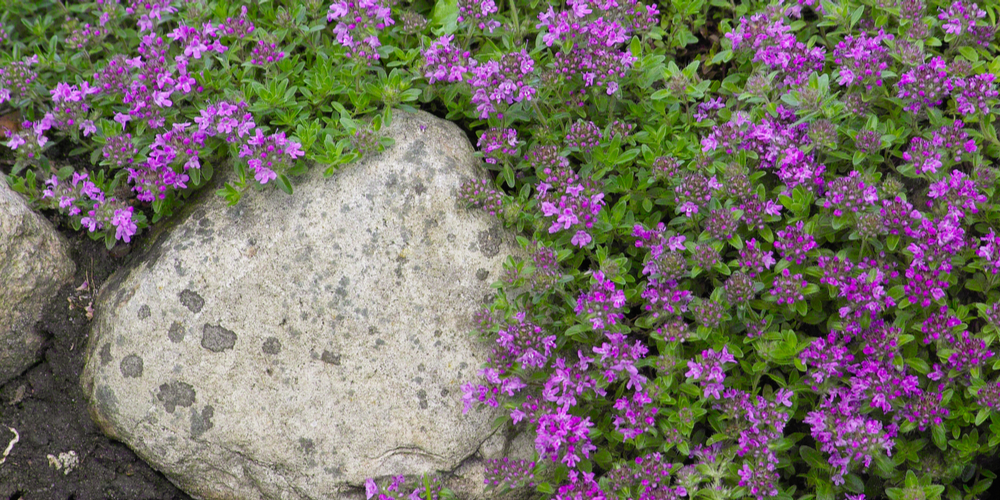
- Hardiness Zones: 4-9
- Sun/Shade Requirement: Full sun (6+ hours) to light afternoon shade
- Companions: Sedum, ornamental grasses, creeping phlox, stonecrop
- Bloom Time: Late spring through early summer (May-July); individual flushes last about 4-6 weeks
2. Ice Plant (Delosperma cooperi)
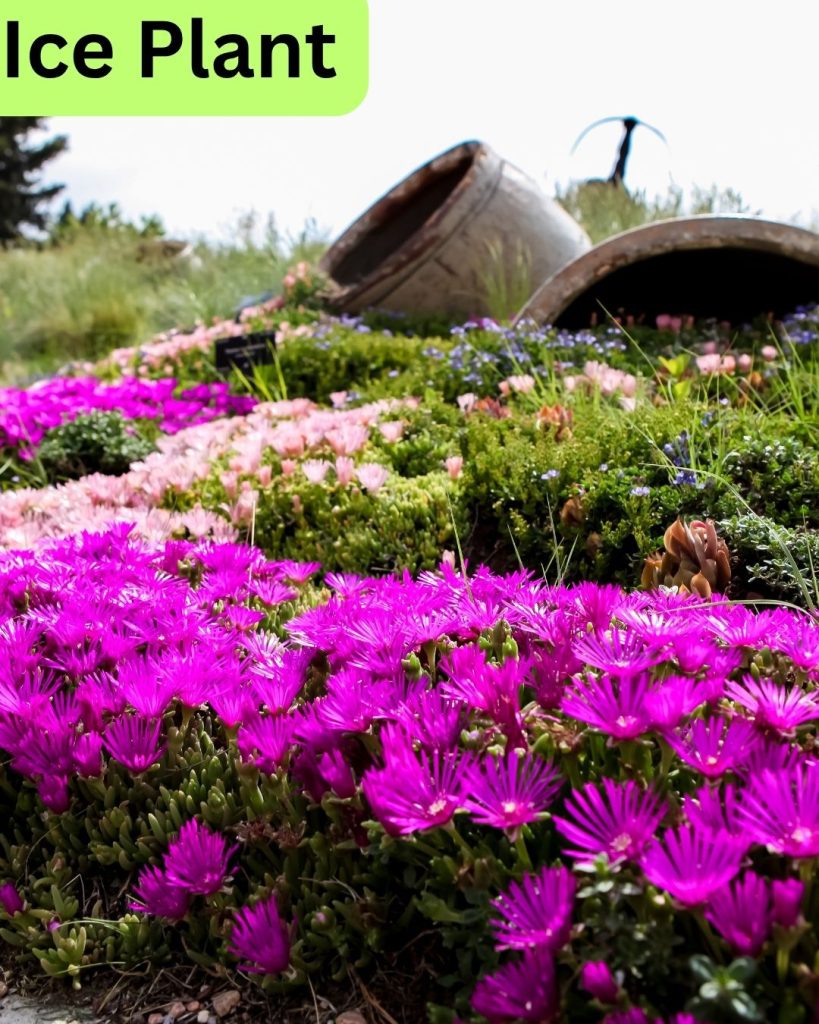
• Its glistening, water‑filled leaves look like dewy jewels under the sun.
• Some varieties pump excess salt from the soil into their leaves to stay happy in salty spots.
• Hummingbirds and butterflies flock to its blooms at dawn for an early breakfast.
In sun‑baked rock gardens and dry borders, the ice plant stretches into a dense carpet of succulent leaves topped with brilliant magenta flowers.
Its rapid, mat‑forming habit outcompetes weeds by shading the soil and denying them the light they need to sprout.
When planting ice plant, choose full sun and extremely well‑drained, sandy or gravelly soil-poor soils are actually ideal.
Water sparingly once established; trimming back spent blooms in late summer can encourage a fresh flush of flowers and keep the mat tidy.
Ice Plant Essentials:
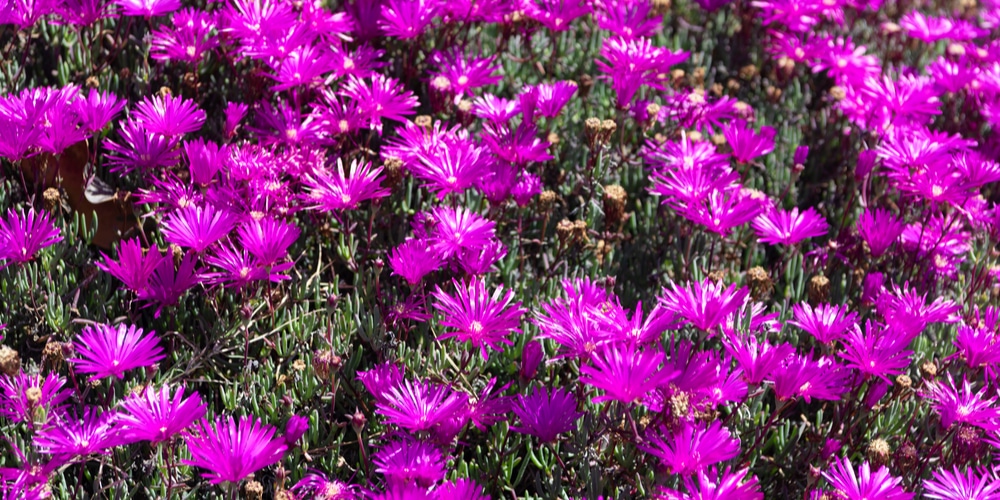
- Bloom Time: Late spring through early fall (May-September); individual blooms last 1-2 days, with a continuous flush lasting about 10-12 weeks
- Hardiness Zones: 5-9
- Sun/Shade Requirement: Full sun (6+ hours); tolerates very light afternoon shade
- Companions: Sedum, creeping phlox, lavender, low‑growing ornamental grasses
3. Sedum (Sedum spurium)

• Nicknamed “stonecrop,” it thrives in rocky cracks where other plants dare not grow.
• Under drought stress, its leaves turn fiery shades of orange and ruby red.
• Late‑season bees consider it a nectar buffet when most other flowers have faded.
In rock gardens and between pavers, sedum spurium spreads a lush mat of fleshy, succulent leaves topped with clusters of star‑shaped blooms.
Its low, ground‑hugging habit smothers emerging weeds by blocking light and crowding out competitors.
When planting sedum spurium, pick a spot with full sun and sharply drained soil– sand or gravelly loam works best.
Space crowns about 8-12 inches apart so they can cascade into each other, and trim back any leggy runners in late spring to keep the carpet dense and neat.
Sedum Basics:
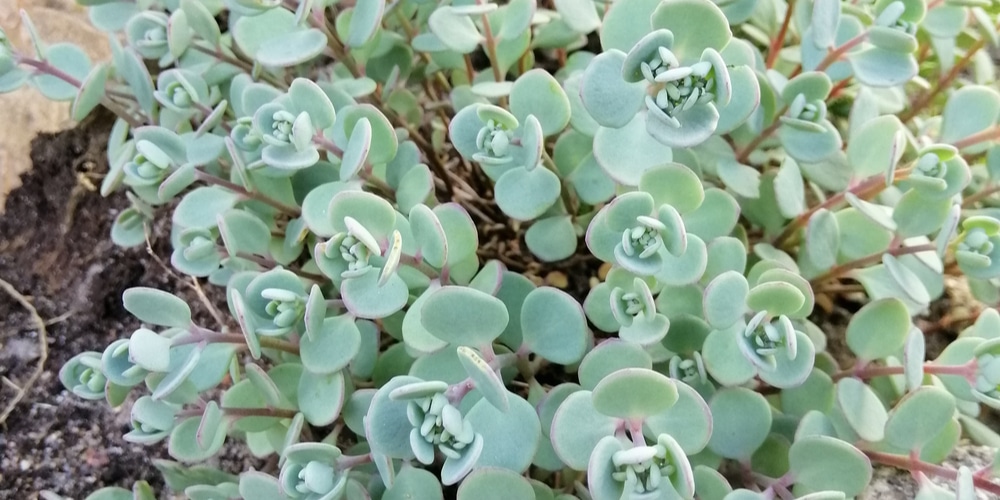
- Hardiness Zones: 3-9
- Sun/Shade Requirement: Full sun (6+ hours); tolerates light afternoon shade
- Companions: Creeping thyme, creeping phlox, dwarf ornamental grasses, lavender
- Bloom Time & Duration: Late spring to early summer (May-July); individual flush lasts about 4-6 weeks
4. Dianthus (Dianthus gratianopolitanus)
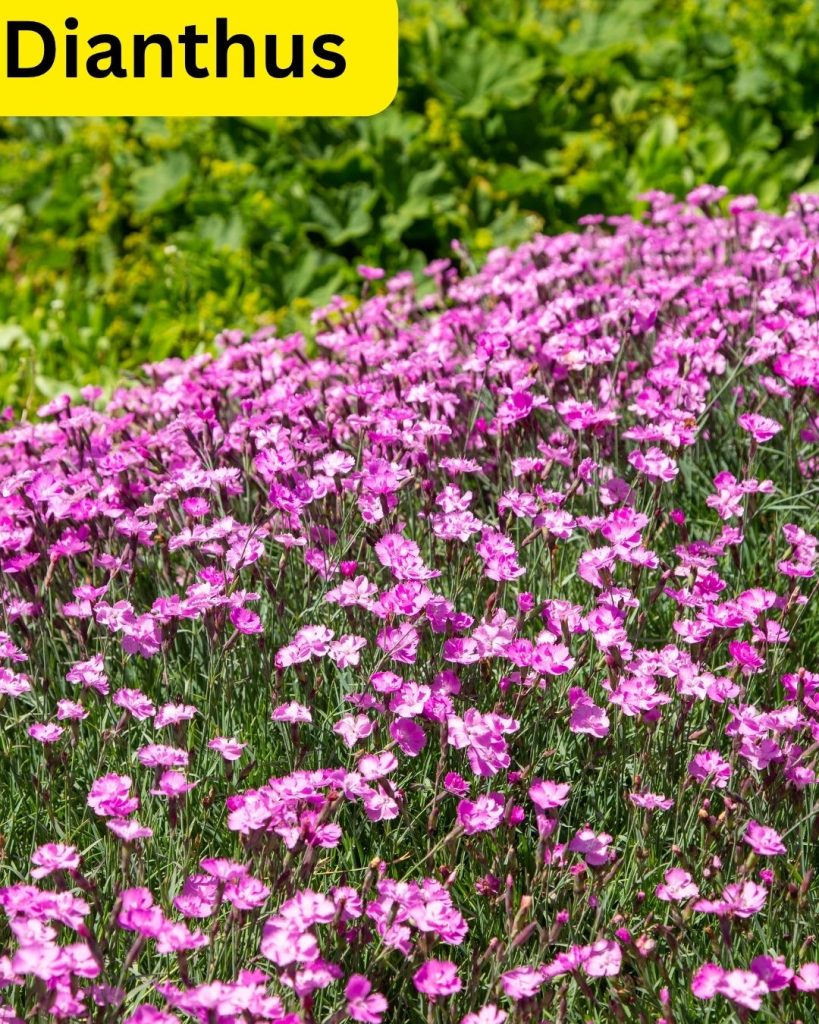
• Called “pinks” after the notched petal edges, not the color itself.
• Its spicy fragrance was once distilled into perfume by European nobility.
• Blossoms are edible. Add a clove‑like twist to salads and desserts.
On rocky slopes and along sunny borders, Dianthus gratianopolitanus forms a neat, low‐growing mound of silvery‐green, grass‑like foliage topped by clusters of fragrant, frilled pink flowers.
☝️(that’s the longest sentence on this site).
Its tight, mat‑forming habit outcompetes weeds by shading the soil and crowding out seedlings.
When planting these hardy “pinks,” choose a spot with full sun and sharply drained, slightly alkaline soil.
Space plants about 8-12 inches apart so the runners can interlock; deadhead spent blooms to keep the carpet tidy and encourage a light rebloom.
Divide every 2-3 years in early fall or spring to rejuvenate the clump and maintain vigor.
Dianthus basics:
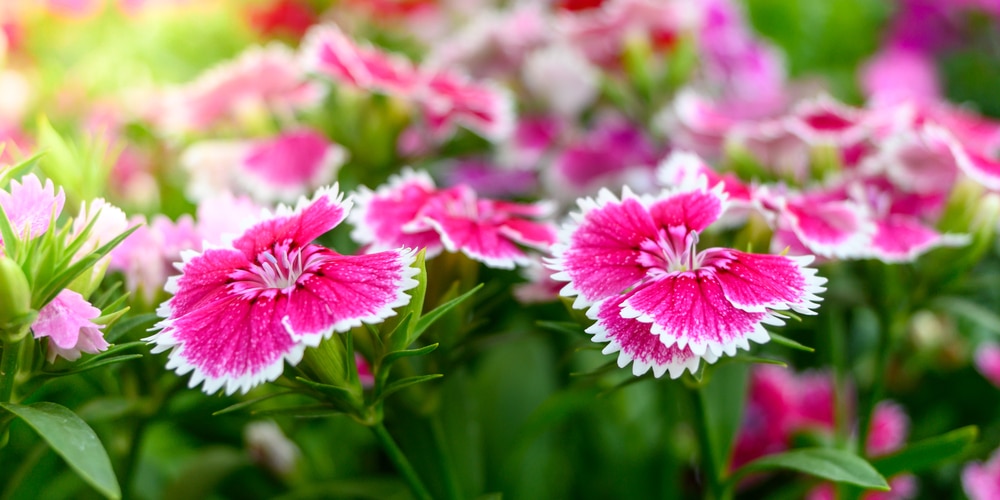
- Hardiness Zones: 3-9
- Sun/Shade Requirement: Full sun (6+ hours)
- Companions: Creeping thyme, sedum, creeping phlox, dwarf ornamental grasses
- Bloom Time & Duration: Late spring to early summer (May-June); individual flush lasts about 4-6 weeks, with occasional rebloom if deadheaded
5. Ajuga (Ajuga reptans)
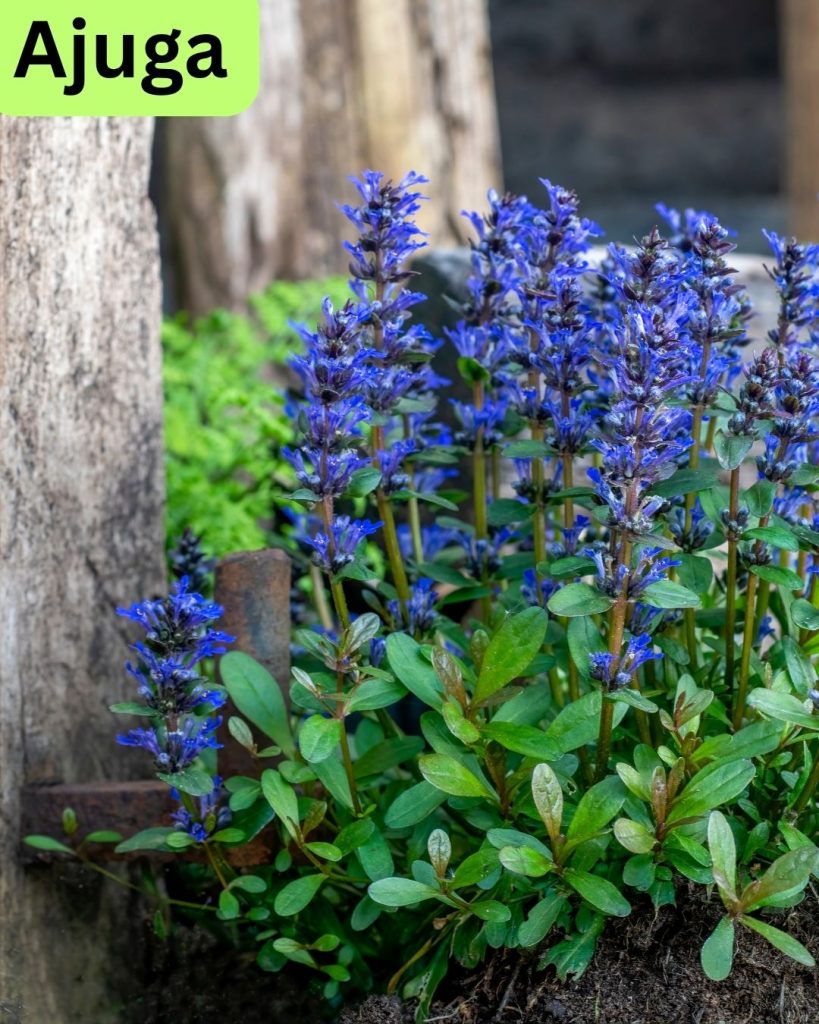
• Also known as bugleweed, it can stop erosion on slopes by anchoring soil fast.
• Cultivars feature foliage in shades of bronze, purple, and chocolate green.
• Traditional herbalists brewed its leaves into a soothing cough remedy.
In shady corners and alongside pathways, ajuga unfurls a lush carpet of glossy, dark green to bronze foliage interspersed with spikes of deep blue flowers.
Its fast‑spreading runners create an impenetrable mat that chokes out weeds by cutting off their light and space.
When planting ajuga, choose a site with partial to full shade and consistently moist, well‑drained soil.
Space plants about 6-9 inches apart so the runners can knit together; after flowering, trim back old flower spikes to tidy the patch and prevent unwanted reseeding.
Ajuga 101:
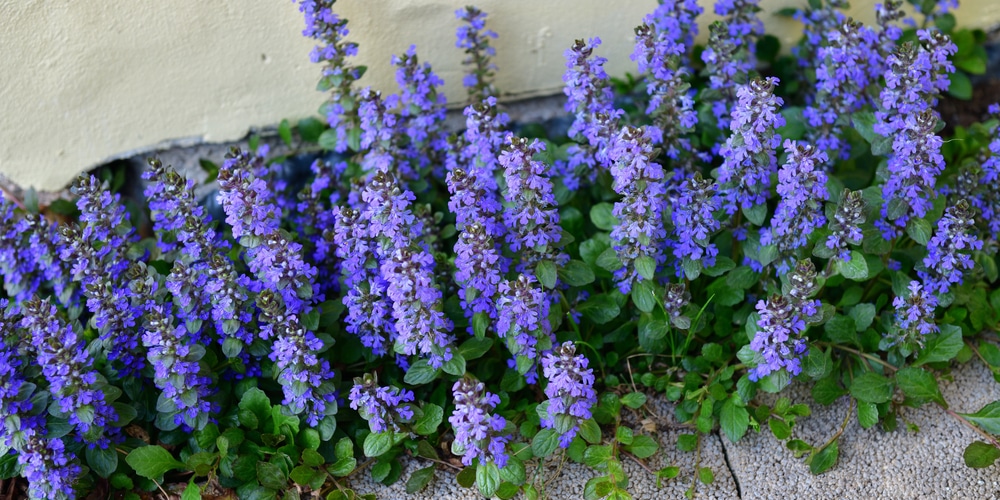
- Hardiness Zones: 3-10
- Sun/Shade Requirement: Partial shade to full shade; tolerates full sun in cooler climates with adequate moisture
- Companions: Ferns, hostas, heuchera, pulmonaria
- Bloom Time & Duration: Mid spring (April-June); individual blooms last about 2-3 weeks
6. Hosta (Hosta spp.)
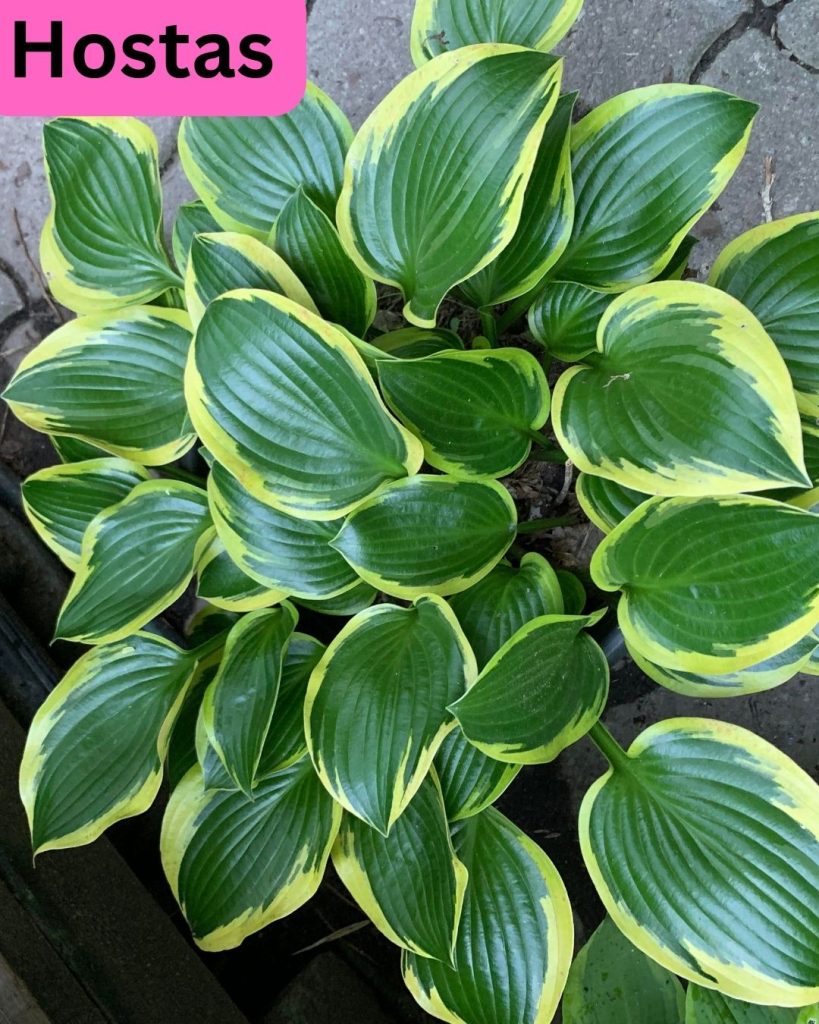
• A single Hosta clump can live and expand in the same spot for over 50 years.
• Its vast leaves make perfect hiding spots for cheeky slugs on humid nights.
• Some types unfurl fragrant, lily‑like flowers only under the cover of darkness.
Ideal for shady borders, Hostas produce large, lush leaves that shade out weed seedlings.
As they expand, their ribbed foliage creates a thick barrier against unwanted plants.
Hosta Basics:
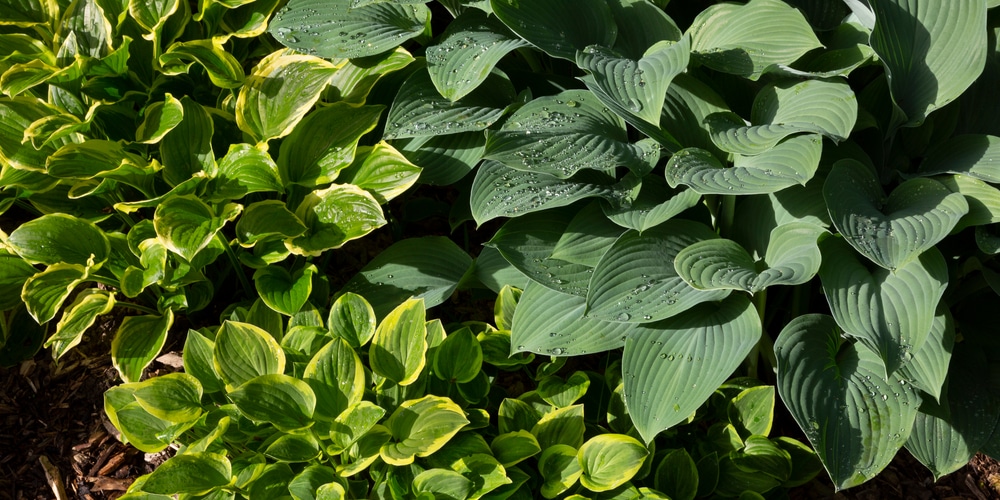
- Hardiness Zones: 3-8
- Sun/Shade Requirement: Shade to part shade
- Companions: Ferns, Heuchera, Brunnera
- Bloom Time & Duration: Summer (June-August); 6-8 weeks
7. Coral Bells (Heuchera spp.)
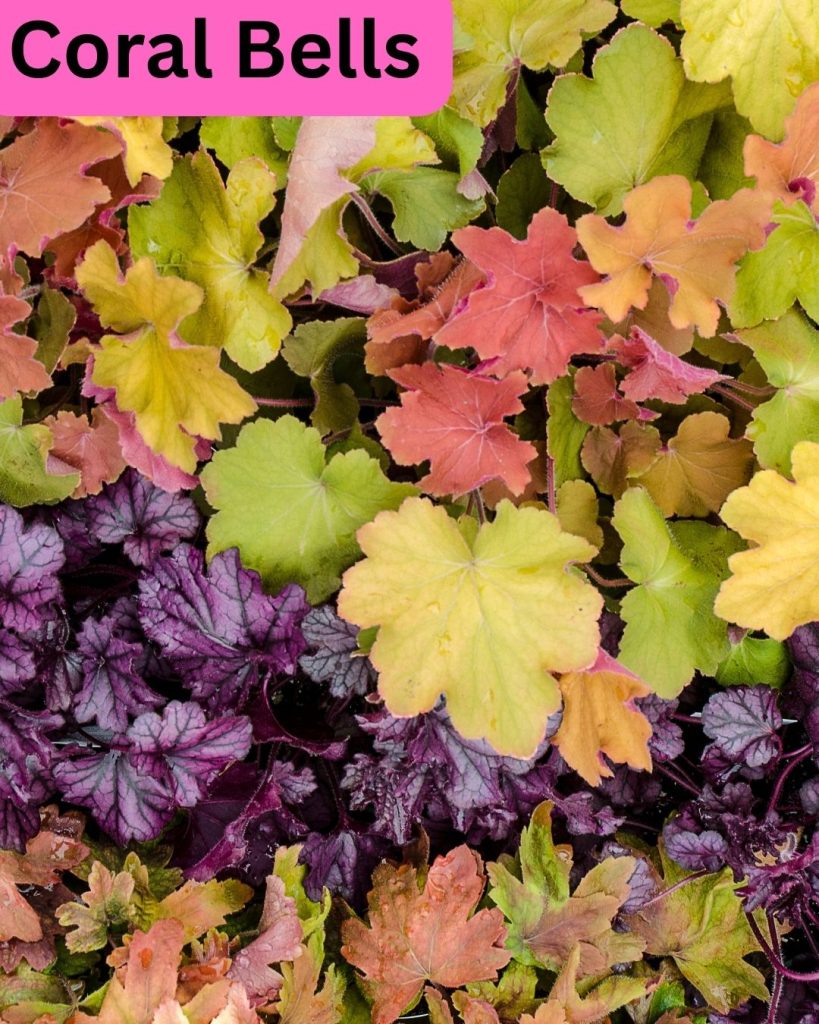
• Native Americans made a calming tea from its leaves during long journeys.
• Soil acidity tweaks can shift leaf colors from chartreuse to burgundy.
• Its tiny bells dance on wiry stems, tempting hummingbirds in spring.
Coral bells offer a rainbow of foliage colors, from deep purple to lime green, and airy flower spikes in late spring.
Their clumping habit blocks weeds and adds year‑round interest.
Coral Bell Basics:
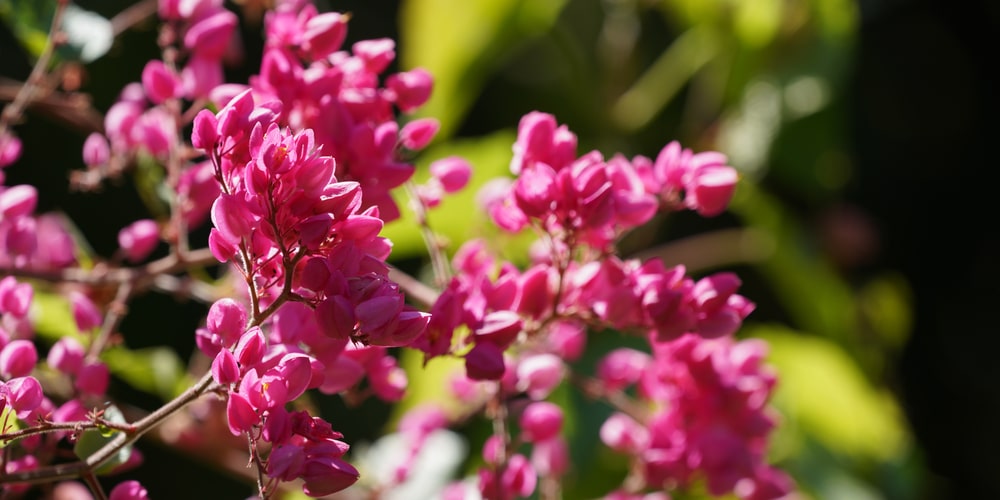
- Hardiness Zones: 4-9
- Sun/Shade Requirement: Part shade to shade
- Companions: Hostas, Ferns, Astilbe
- Bloom Time & Duration: Late spring to early summer (May-June); 4-6 weeks
8. Columbine (Aquilegia spp.)
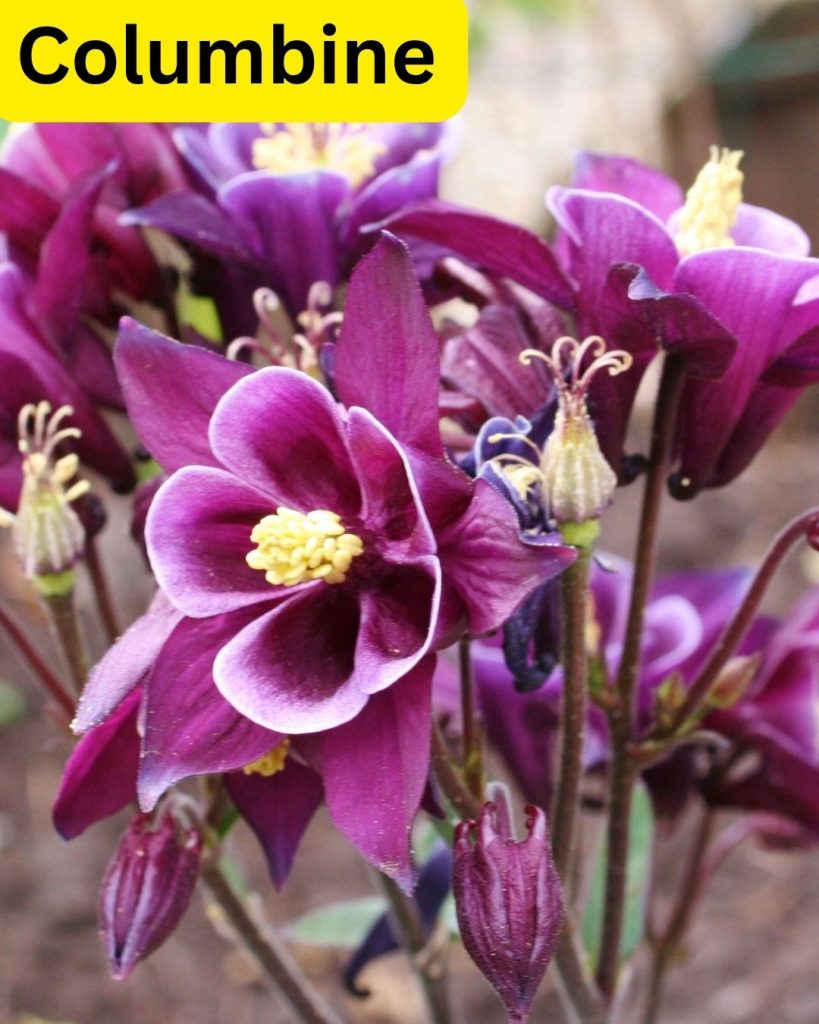
• Each flower’s long spur evolved to match the tongue length of specific hummingbirds.
• Its scientific name, Aquilegia, means “eagle,” nodding to its leaf shape.
• Seeds contain mild alkaloids once used by herbalists to treat minor ulcers.
Elegantly nodding, spurred flowers of columbine lure pollinators, while its fern-like foliage forms airy clumps that shade out weeds.
Self‑seeding varieties keep the display coming year after year.
Columbines 101:
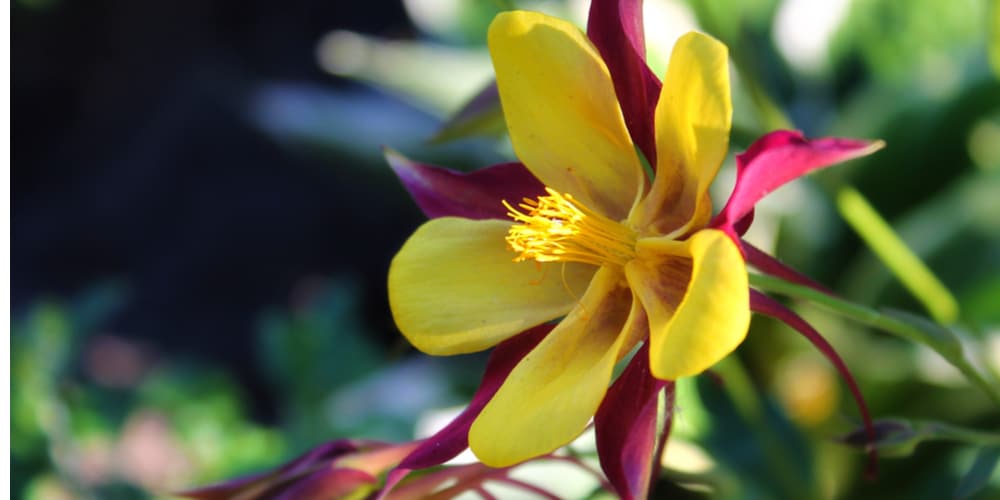
- Hardiness Zones: 3-8
- Sun/Shade Requirement: Part shade
- Companions: Salvia, Ferns, Heuchera
- Bloom Time & Duration: Late spring (May-June); 3-4 weeks
9. Blanket Flower (Gaillardia spp.)
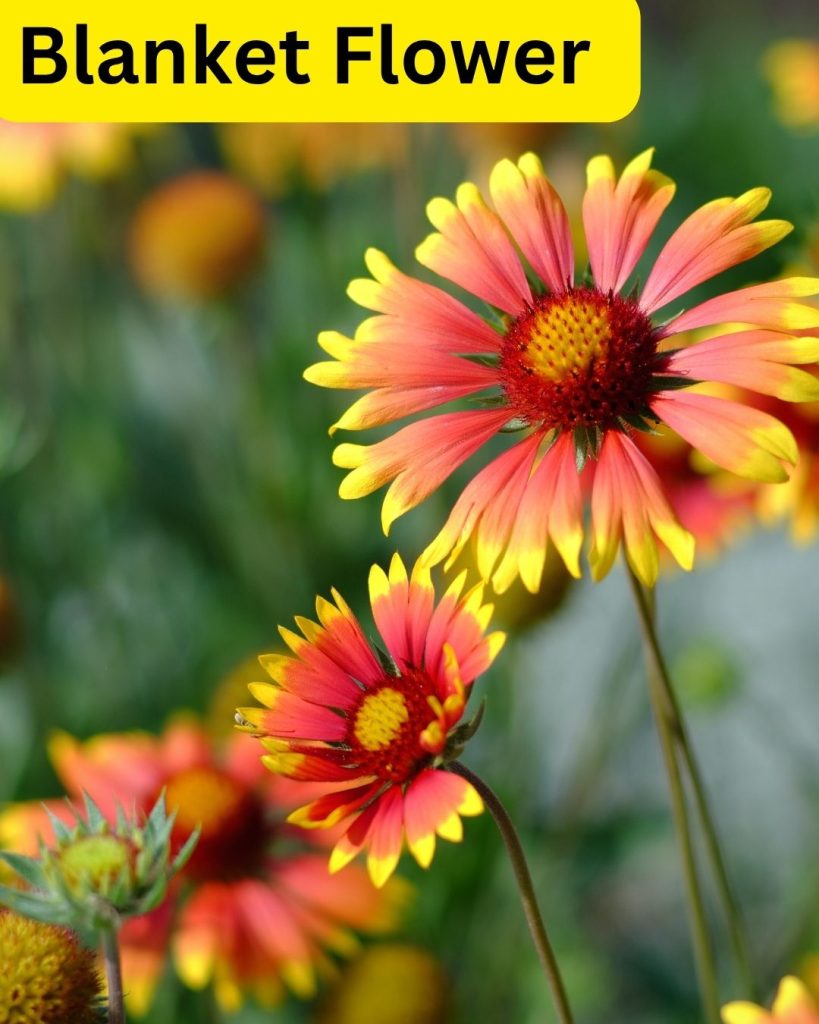
• Petals often age from bright red at the tips to rich yellow at the base.
• It self‑sows so prolifically you might find new plants popping up everywhere.
• Plains tribes brewed its flowers into a colorful tea and fabric dye.
In sunny borders and wildflower meadows, blanket flowers burst into bloom with vibrant, daisy‑like petals in fiery reds, oranges, and yellows that seem to glow against their low, gray‑green foliage.
Their fast‑growing, clump‑forming habit and deep, fibrous roots outcompete weeds by quickly covering bare ground and drawing moisture from below, leaving little room for invaders to establish.
When planting blanket flowers, choose a site with full sun and well‑drained soil; even poor, sandy mixes work well.
Space plants about 12-18 inches apart so each clump can fill in; deadhead spent blooms regularly to encourage nonstop flowering.
Every 2-3 years, divide clumps in spring to rejuvenate growth and keep the mats dense.
Blanket Flower Essentials:
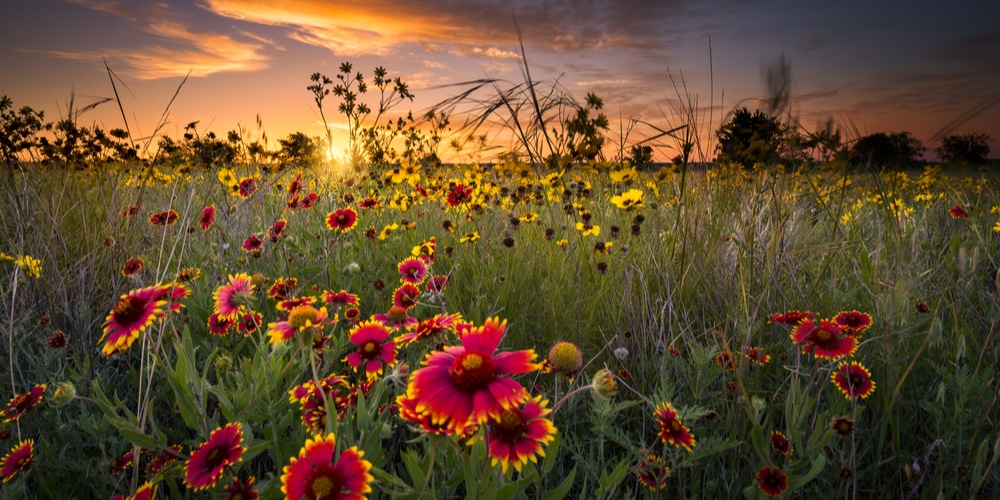
- Hardiness Zones: 3-10
- Sun/Shade Requirement: Full sun
- Companions: Coreopsis, Salvia, Echinacea
- Bloom Time & Duration: Summer to early fall (June-September); 8-12 weeks
10. Coneflower (Echinacea purpurea)

• Native Americans ground its seeds into protein‑rich flour during lean times.
• Its name “snakeroot,” comes from old‑time use as a snakebite antidote.
• Goldfinches strip the spent seedheads clean, turning stalks into bird feeders.
Towering on sturdy, upright stems, coneflowers flaunt large, daisy‑like blooms with prominent, spiny centers in shades of purple, pink, and white.
It’s deep taproots and clumping habit outcompete weeds by drawing moisture and nutrients from deep soil layers, while the tall foliage shades out low seedlings.
When planting coneflowers, pick a spot with full sun and well‑drained, average garden soil. Space plants about 12-18 inches apart to allow air circulation and robust root development.
Apply a 2‑ to 3‑inch layer of mulch around the base to conserve moisture and suppress weeds, and deadhead spent blooms to encourage a fresh flush of flowers.
Coneflower Basics
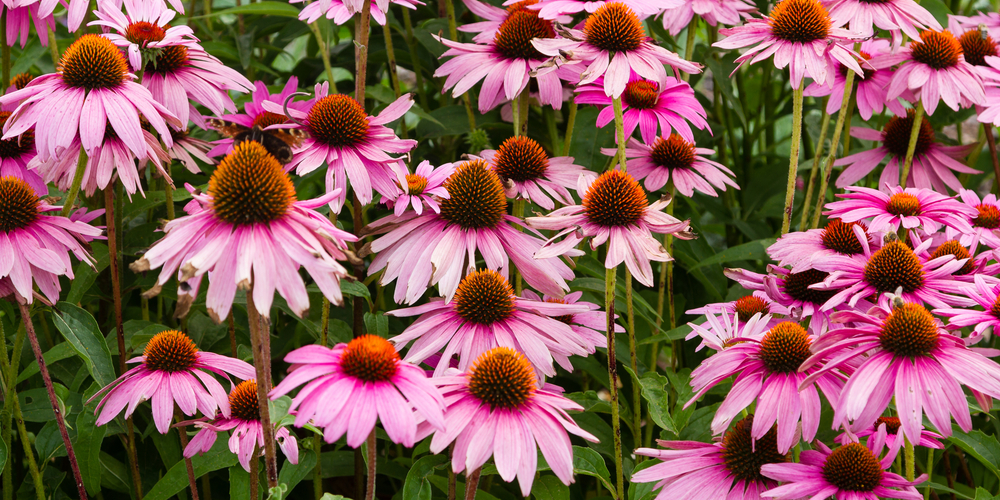
- Hardiness Zones: 3-9
- Sun/Shade Requirement: Full sun (6+ hours)
- Companions: Black‑eyed Susan, yarrow, Russian sage, ornamental grasses
- Bloom Time & Duration: Summer through early fall (July-September); each bloom lasts 4-6 weeks, with continuous rebloom when deadheaded
11. Black-eyed Susan (Rudbeckia fulgida)
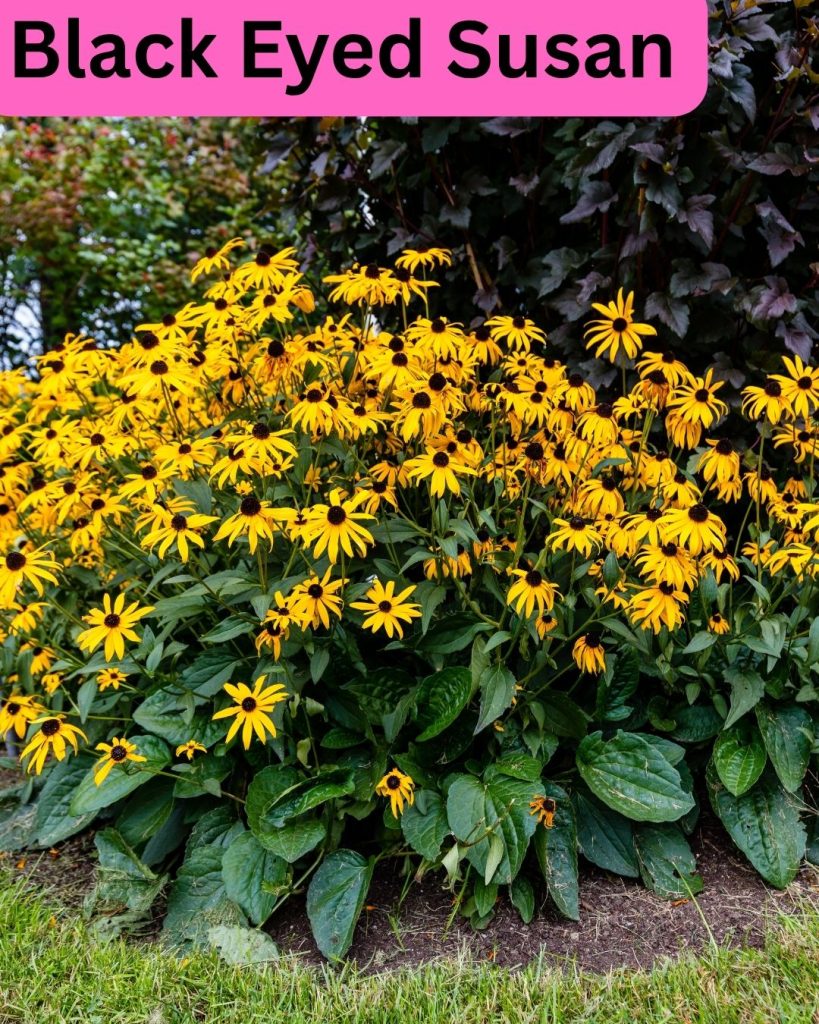
• Chosen as Maryland’s state flower in 1918 for sheer toughness.
• Petals fold up in rainstorms to shield the pollen from wash‑out.
• Roots steeped into tea were a go‑to cold remedy for early settlers.
In sunny borders and meadow‑style plantings, Black‑eyed Susans shine with their bold, golden‑yellow petals surrounding dark brown centers.
Their clumping growth habit and fibrous root system quickly fills bare spots, shading out weed seedlings before they can take hold.
When planting Black‑eyed Susans, choose full sun and rich, well‑drained soil.
Space plants about 12-18 inches apart so each clump can expand. Applying a 2‑inch layer of organic mulch helps conserve moisture and keeps stray weeds at bay.
Deadhead spent blooms regularly to encourage nonstop flowering and divide crowded clumps every 3-4 years in spring to maintain vigor.
Black Eyed Susan Essentials:
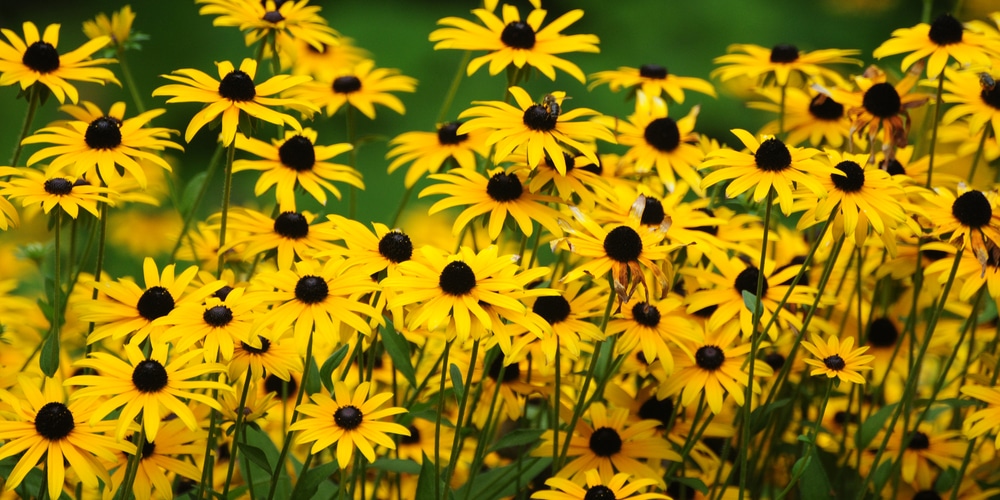
- Hardiness Zones: 3-9
- Sun/Shade Requirement: Full sun (6+ hours)
- Companions: Coneflower, sedum, ornamental grasses, salvia
- Bloom Time & Duration: June through September; individual blooms last about 3-4 weeks, with continuous flushes when deadheaded
12. Coreopsis (Coreopsis lanceolata)

• Seed pods fling tick‑like seeds several feet when they dry and pop open.
• Its genus name, Coreopsis, means “like an eyelash,” referencing its seeds.
• Attracts ladybugs, natural predators that munch through pesky aphids.
In sunny meadows and cottage borders, coreopsis dazzles with bright, daisy‑like yellow flowers perched on wiry stems above a low mound of fine, feathery foliage.
Its vigorous, clump‑forming habit and deep fibrous roots outcompete weeds by quickly occupying bare soil and absorbing moisture before unwanted seedlings can take hold.
When planting coreopsis, select a site with full sun and well‑drained soil-sandy or loamy mixes work best. Space plants 12-18 inches apart to allow clumps room to expand.
After the initial bloom, deadhead spent flowers to encourage a secondary flush, and divide crowded clumps every 2-3 years in spring to maintain vigor and prevent center die‑out.
Coreopsis 101:
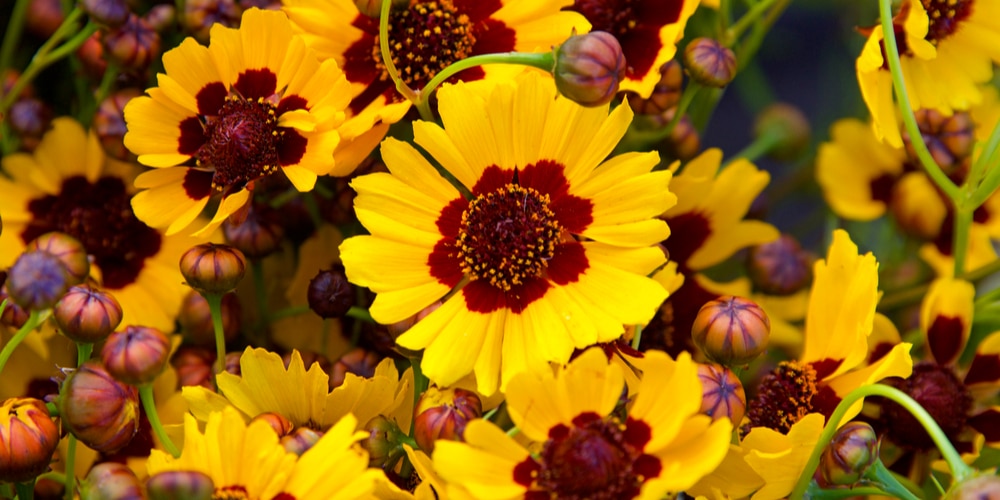
- Hardiness Zones: 4-9
- Sun/Shade Requirement: Full sun (6+ hours)
- Companions: Coneflower, Black‑eyed Susan, salvia, ornamental grasses
- Bloom Time & Duration: Late spring through mid summer (May-July); individual blooms last 2-3 weeks, with continuous rebloom when deadheaded
13. Garden Phlox (Phlox paniculata)
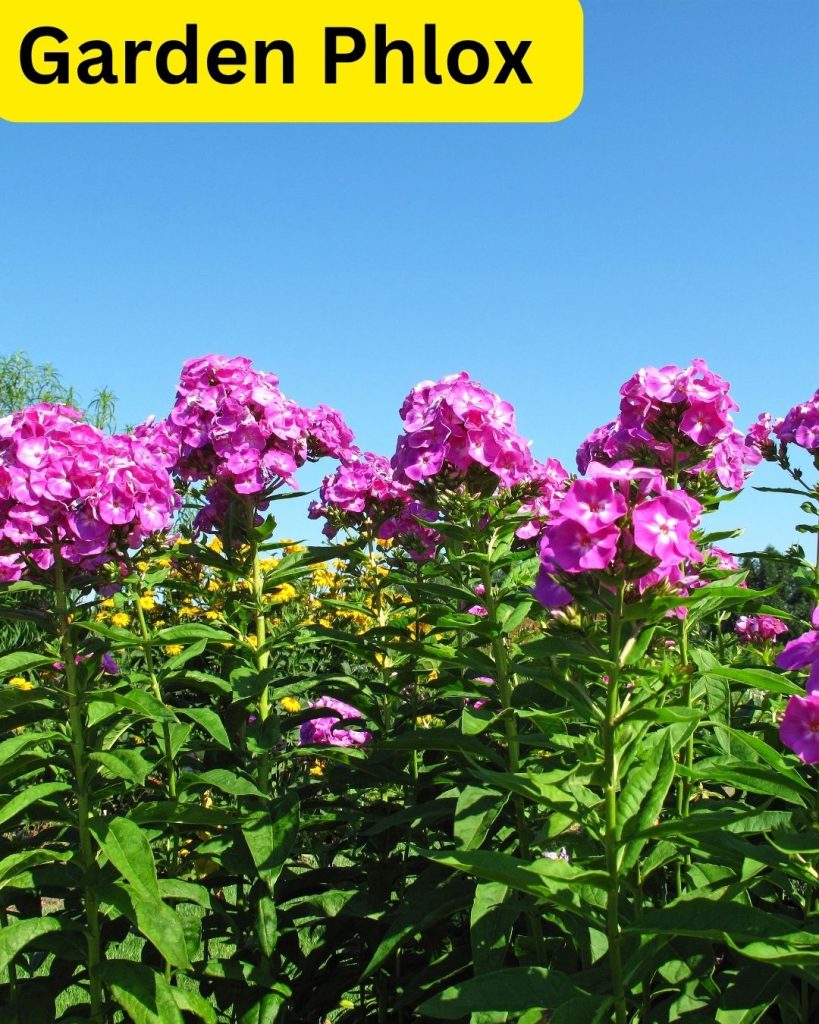
• Blooms open at dawn and often close by midday in hot summer sun.
• It hybridizes so easily there are over 100 named color‑rich cultivars.
• Deer usually steer clear thanks to its mildly toxic foliage.
In cottage gardens and mixed borders, garden phlox commands attention with its large, fragrant clusters of flowers in shades of pink, white, and lavender.
Its dense, upright clumps form a living screen that crowds out weeds by shading the soil and monopolizing moisture.
When planting phlox, choose a site with full sun (at least 6 hours) and rich, well‑drained soil amended with compost.
Space plants 18-24 inches apart to ensure good air flow and reduce mildew.
Apply a 2‑inch mulch layer to conserve moisture and suppress weed growth.
Stake taller varieties if needed, deadhead spent blooms for prolonged flowering, and divide clumps every 3 years in spring to rejuvenate vigor.
Garden Phlox Essentials:
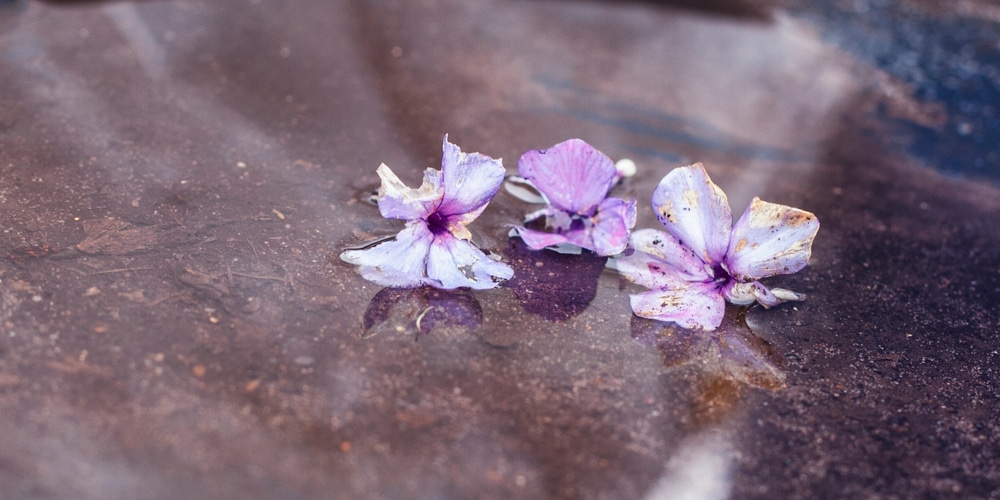
- Hardiness Zones: 4-8
- Sun/Shade Requirement: Full sun to part shade (6+ hours of sun)
- Companions: Daylilies, Shasta daisies, ornamental grasses, sedum
- Bloom Time & Duration: Mid summer through early fall (July-August); flower clusters last about 2-3 weeks, with rebloom encouraged by deadheading
14. Catmint (Nepeta × faassenii)
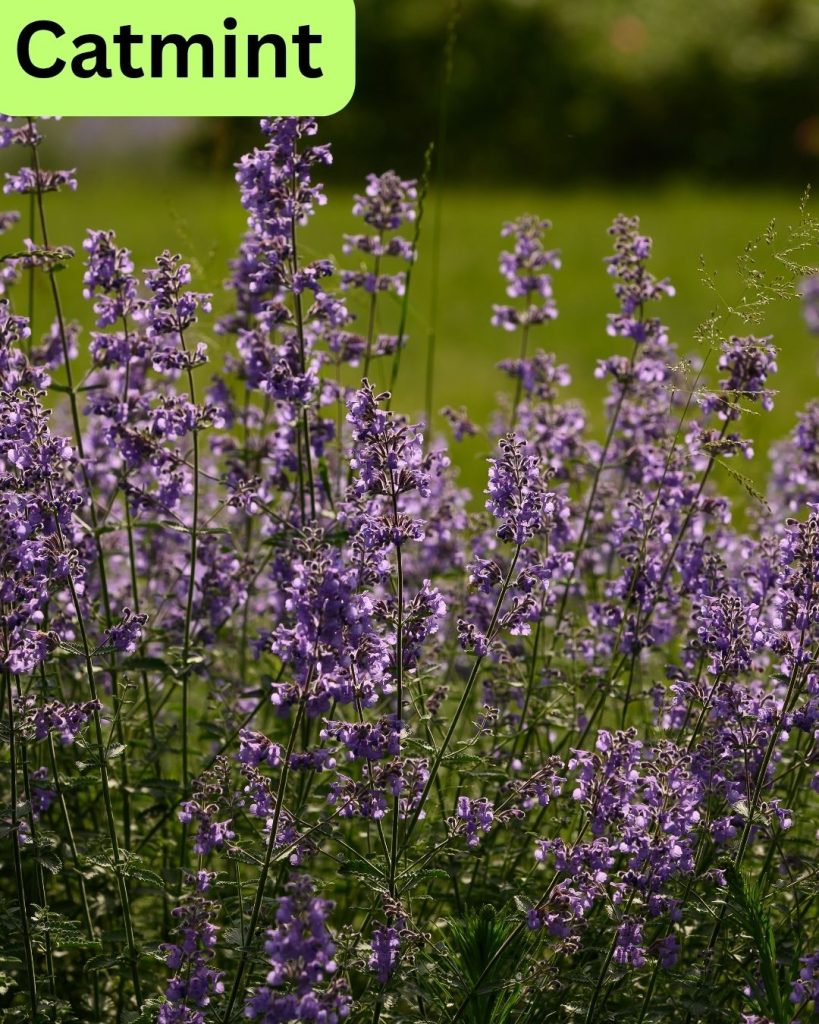
• The nepetalactone in its leaves gives cats a playful, euphoric high.
• Herbalists once brewed it as a gentle sleep‑inducing tonic.
• Swallowtail butterflies rely on it for nectar during high‑temperature stretches.
With its mounds of aromatic, gray‑green foliage topped by spikes of lavender‑blue blooms, catmint spreads quickly to form a fragrant carpet that crowds out weeds.
The dense canopy of leaves shades bare soil, while its fibrous roots monopolize moisture and nutrients before unwanted seedlings can take hold.
When planting catmint, choose a site with full sun to light afternoon shade and well‑drained soil-too much moisture can lead to flop.
Space plants about 12-18 inches apart so their runners can interlock. After the first bloom (usually late spring), shear back flowering stems by one‑third to encourage a fresh flush of blooms and keep the center from dying out.
Catmint Basics:
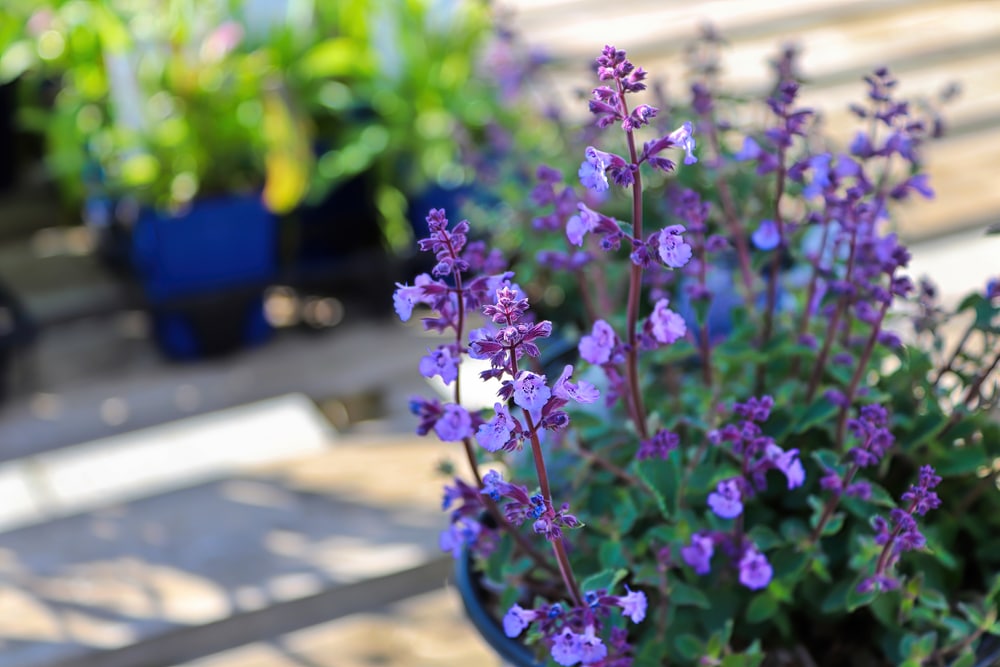
- Hardiness Zones: 4-8
- Sun/Shade Requirement: Full sun (6+ hours) to part shade
- Companions: Roses, lavender, salvia, yarrow, ornamental grasses
- Bloom Time & Duration: Late spring through midsummer (May-July); individual spikes last 3-4 weeks, with rebloom into early fall when sheared back
15. Salvia (Salvia nemorosa)
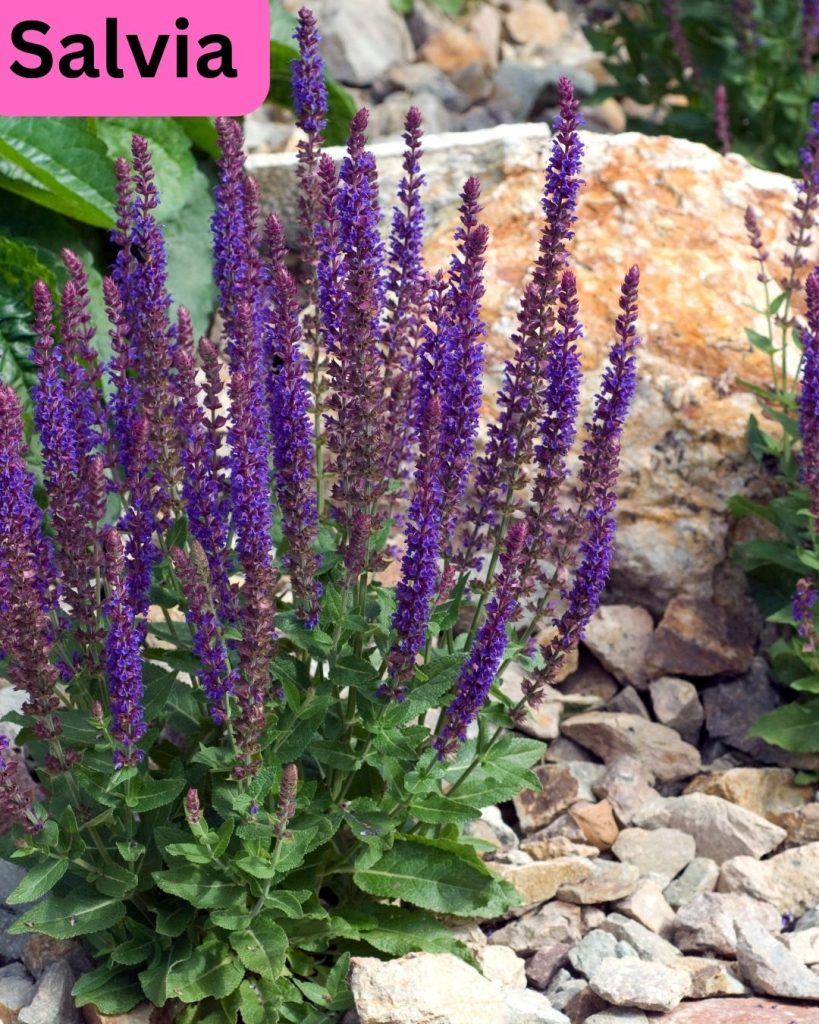
• Its Latin name means “to heal,” hinting at centuries of folk‑medicine uses.
• In mild regions its leaves stay green all winter long.
• Hummingbirds hover for minutes sipping from its nectar‑packed tubes.
In borders and rock gardens, Salvia nemorosa forms tidy clumps of aromatic foliage topped by upright spikes of violet‑blue flowers.
Its upright growth and dense foliage shade out young weeds, while a fibrous root system quickly occupies space, leaving little room for intruders.
When planting salvia, pick a spot with full sun and well‑drained soil-amend heavy clay with compost or grit. Space plants about 12-15 inches apart so airflow prevents mildew.
After the first flush of blooms in late spring, trim back flower spikes by one‑third to encourage a second wave of flowering and keep the clump compact.
Salvia 101:
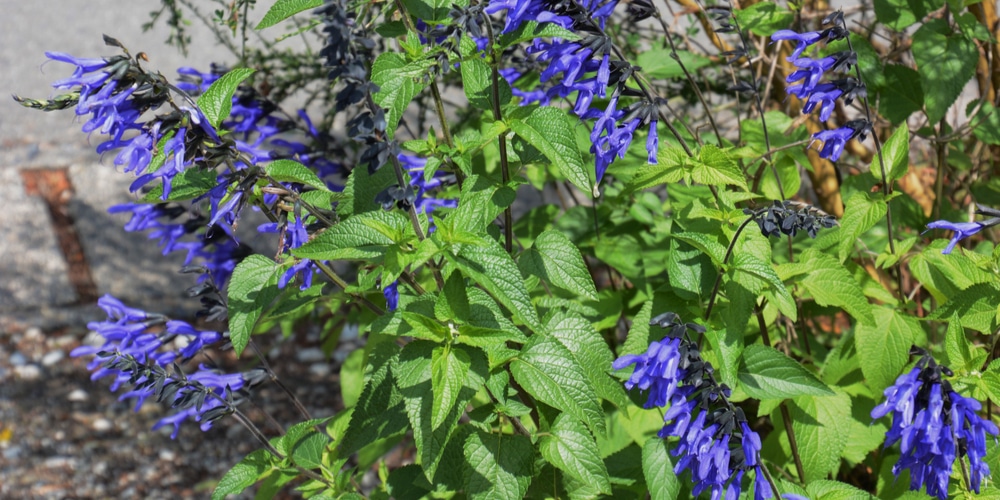
- Hardiness Zones: 4-8
- Sun/Shade Requirement: Full sun (6+ hours); tolerates light afternoon shade
- Companions: Coreopsis, blanket flower, ornamental grasses, catmint
- Bloom Time & Duration: Late spring through early summer (May-July) and again in late summer (August-September); each flush lasts about 4-6 weeks when deadheaded
16. Yarrow (Achillea millefolium)
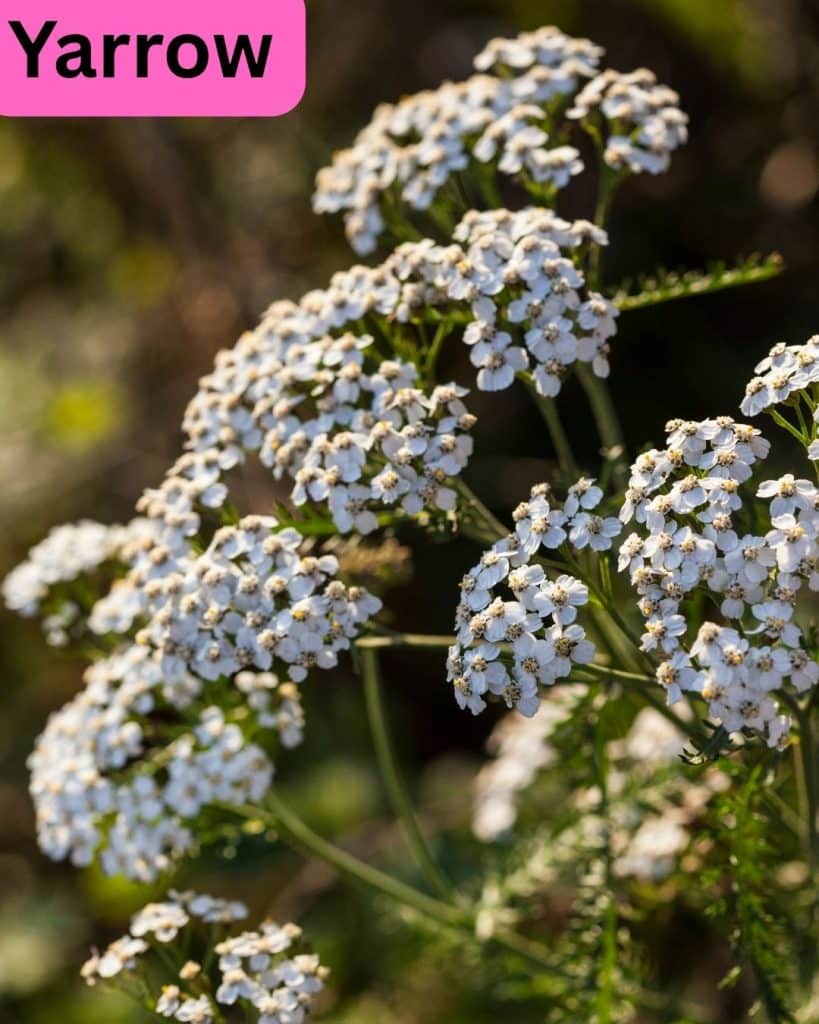
• Roman soldiers pressed yarrow leaves into wounds to staunch bleeding.
• It’s a soil “vacuum,” pulling up heavy metals and helping to clean earth.
• Crushing its feathery foliage releases a spicy, herbal scent.
In sunny meadows and rock gardens, yarrow unfurls flat-topped clusters of tiny, daisy-like flowers in shades of white, pink, and gold above a rosette of feathery, fern-like foliage.
Its dense, clump-forming habit and vigorous, fibrous root system create a living mulch that outcompetes weeds by shading the soil and monopolizing moisture.
When planting yarrow, select a spot with full sun and well‑drained soil-avoid heavy clay. Space plants about 12-18 inches apart so mature clumps can intermingle.
Once established, yarrow thrives on neglect; trim back flower stalks after the first bloom to encourage a second flush and cut entire stems to the ground in late fall to keep the patch tidy.
Yarrow 101:
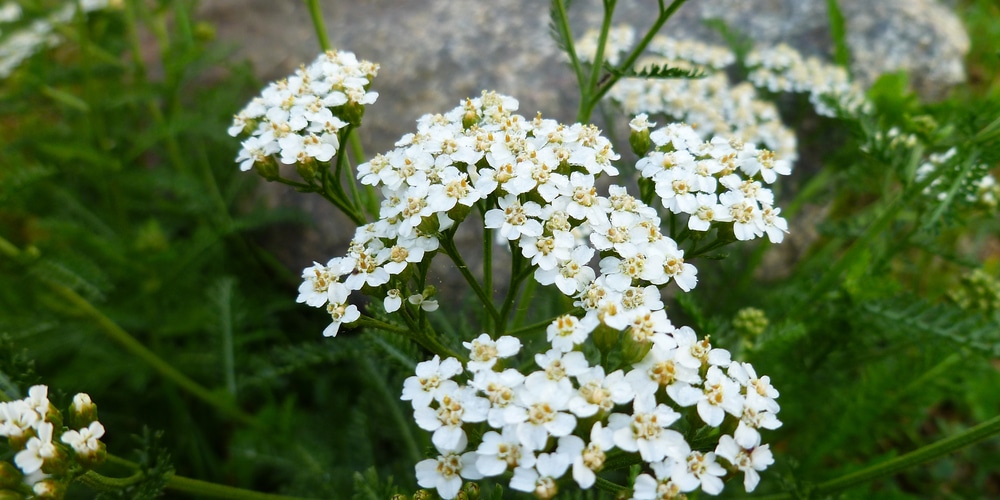
- Hardiness Zones: 3-9
- Sun/Shade Requirement: Full sun (6+ hours); tolerates light afternoon shade
- Companions: Coneflower, sedum, ornamental grasses, lavender
- Bloom Time & Duration: Early summer through early fall (June-September); each flush lasts about 4-6 weeks, with a rebloom when deadheaded.
17. Lavender (Lavandula angustifolia)
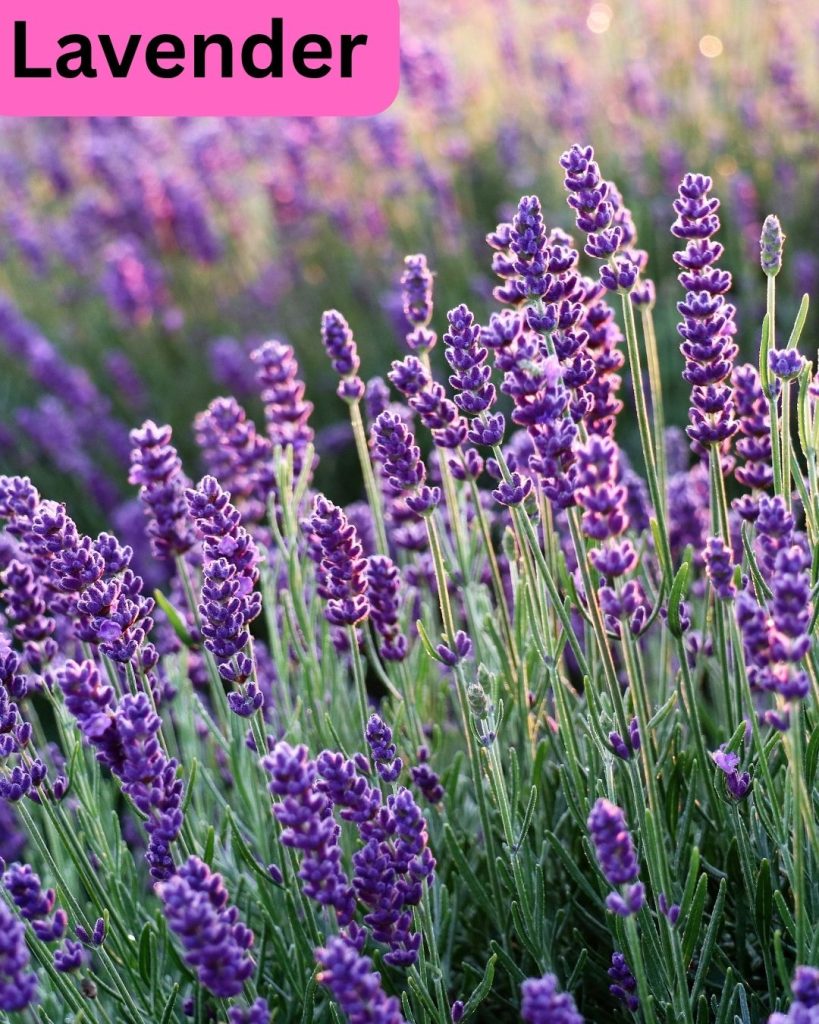
• Ancient Romans scented their baths and laundry with bunches of lavender.
• A single bush can attract thousands of bee visits each sunny hour.
• Hardy varieties survive winter lows down to –20°F.
In sun‑baked borders and cottage herb gardens, lavender unfurls slender, silvery‑green foliage topped by tall spikes of fragrant purple blooms.
Its dense clumps form a living mulch, shading out weed seedlings while the aromatic oils in its leaves help deter some opportunistic sprouts.
When planting lavender, choose a site with full sun and extremely well‑drained, slightly alkaline soil-add gravel or sand to heavy beds.
Space plants 12-18 inches apart so air can circulate around the crowns. After the first flush of blooms in early summer, shear back spent flower spikes by one‑third to encourage a neat shape and potential rebloom in late summer.
(Lavender) basics:
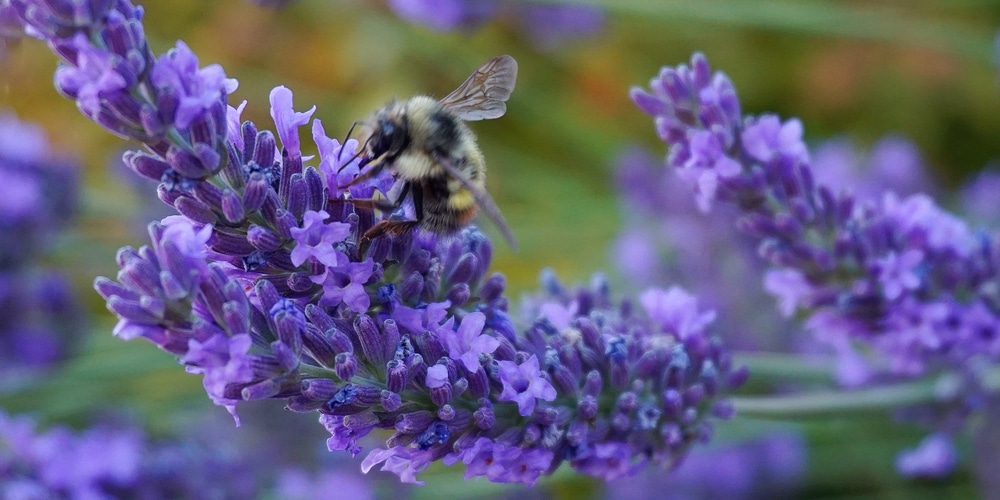
- Bloom Time & Duration: Early to mid summer (June-August); flower spikes last 4-6 weeks, with a second lighter bloom possible if sheared back outlast weeds.
- Hardiness Zones: 5-9
- Sun/Shade Requirement: Full sun (6+ hours)
- Companions: Rosemary, sage, catmint, echinacea, ornamental grasses
18. Hardy Geranium (Geranium × Rozanne)
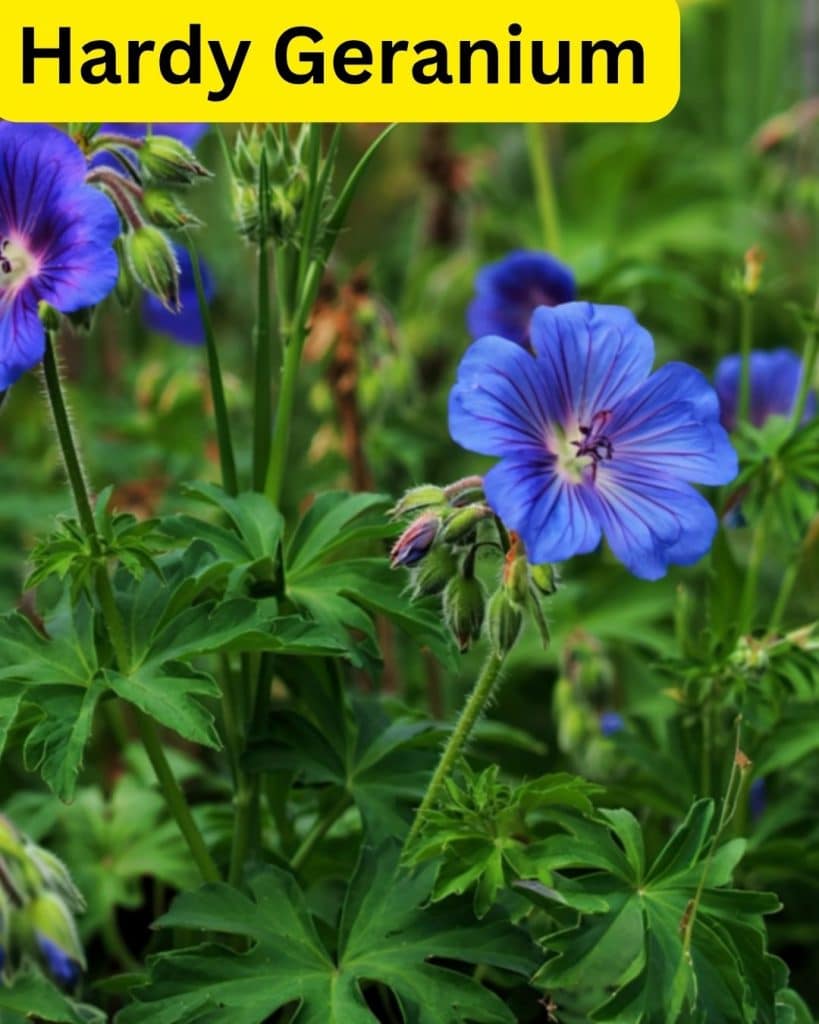
• Won RHS Plant of the Year in 2008 for its marathon bloom time.
• Flowers from June into October-over 20 weeks of nonstop color.
• Impressively drought‑tolerant once its roots get cozy.
In borders and rock gardens, the Hardy Geranium spreads a low, mounding carpet of deeply lobed green leaves studded with vivid violet‑blue flowers.
Its vigorous, trailing habit quickly fills in bare spots, shading out weeds and creating a living mulch that keeps unwanted seedlings at bay.
When planting Geranium × Rozanne, choose a spot with full sun to part shade and rich, well‑drained soil. Space plants about 12-18 inches apart so the mounds can merge.
Remove spent blooms as needed to encourage its famed long bloom season, which can last from late spring until the first frost.
Hardy Geranium basics
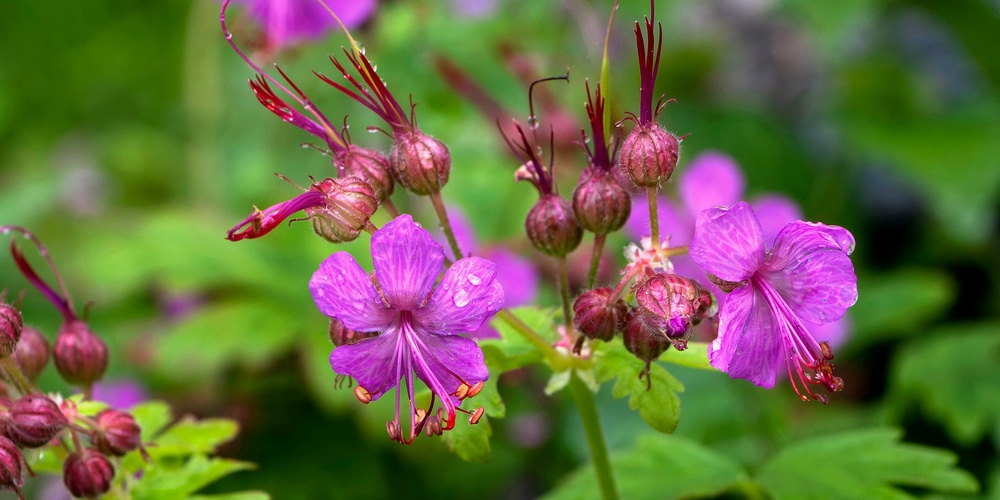
- Bloom Time & Duration: Late spring through first frost (May-October); continuous flush of blooms when deadheaded
- Hardiness Zones: 4-8
- Sun/Shade Requirement: Full sun to part shade (4-6 hours of direct light)
- Companions: Hostas, ferns, salvia, lavender, Heuchera
19. Penstemon (Penstemon digitalis)
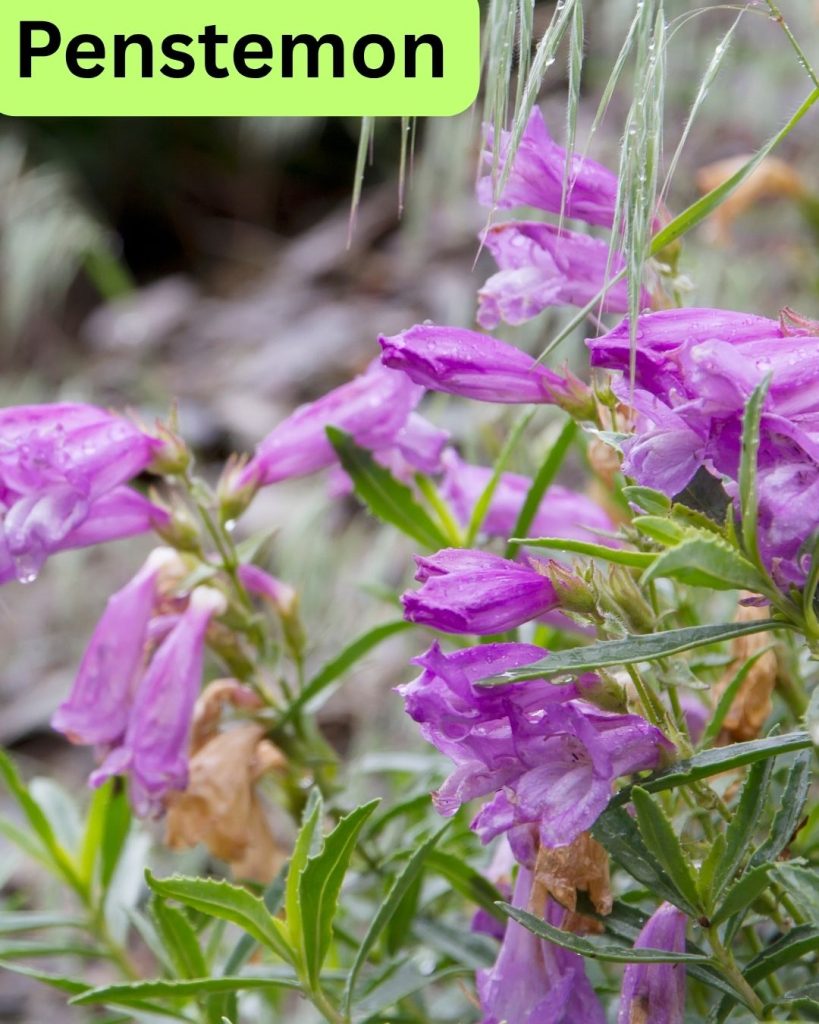
• Called “beardtongue” for the fuzzy hairs on its lower floral lip.
• Blooms display striking color blends, from icy whites to vivid purples.
• Some types self‑seed, forming natural drifts over seasons.
Rising above its clump of lance‑shaped foliage, penstemon produces tall spires of tubular white to pale pink blooms that tempt bees and hummingbirds.
Its deep root system and upright habit compete with weeds by shading the soil and monopolizing moisture before unwanted seedlings emerge.
When planting penstemon, choose full sun to part shade and well‑drained soil amended with compost or grit.
Space plants 12-18 inches apart to ensure good air circulation. After the first flush of blooms in late spring, cut back spent flower spikes to just above the basal foliage to encourage a second wave of flowering and keep the clump tidy.
Penstemon basics:
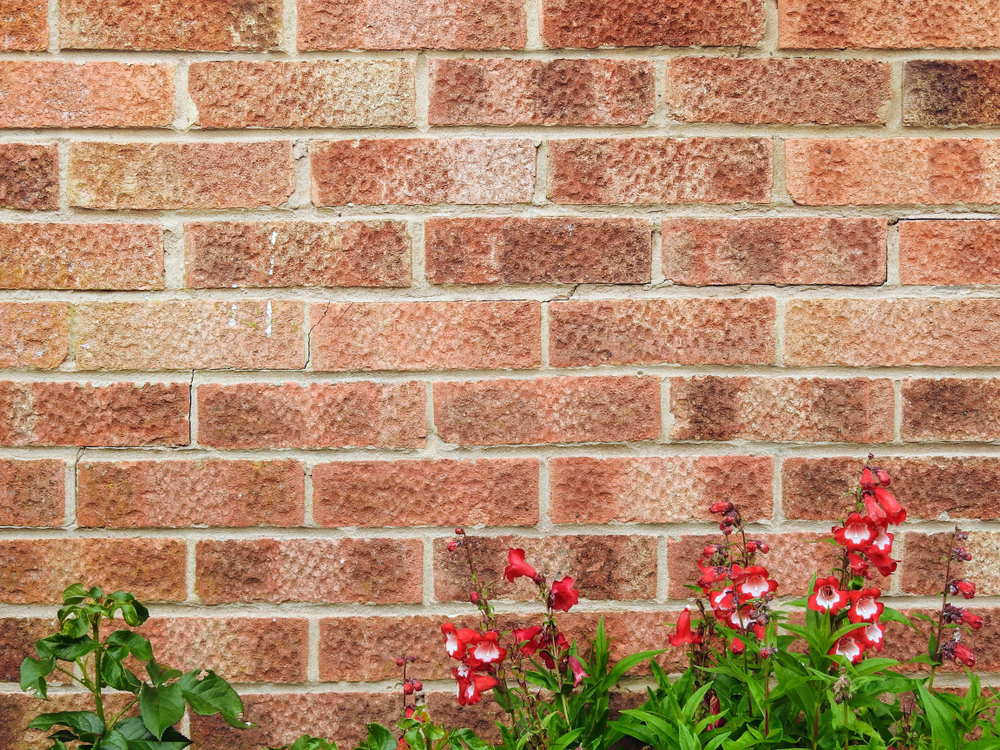
- Hardiness Zones: 3-8
- Sun/Shade Requirement: Full sun to part shade (6+ hours of morning sun)
- Companions: Echinacea, ornamental grasses, salvia, liatris, coreopsis
- Bloom Time & Duration: Late spring through mid summer (May-July); individual spikes last 3-4 weeks, with light rebloom when pruned back
20. False Indigo (Baptisia australis)
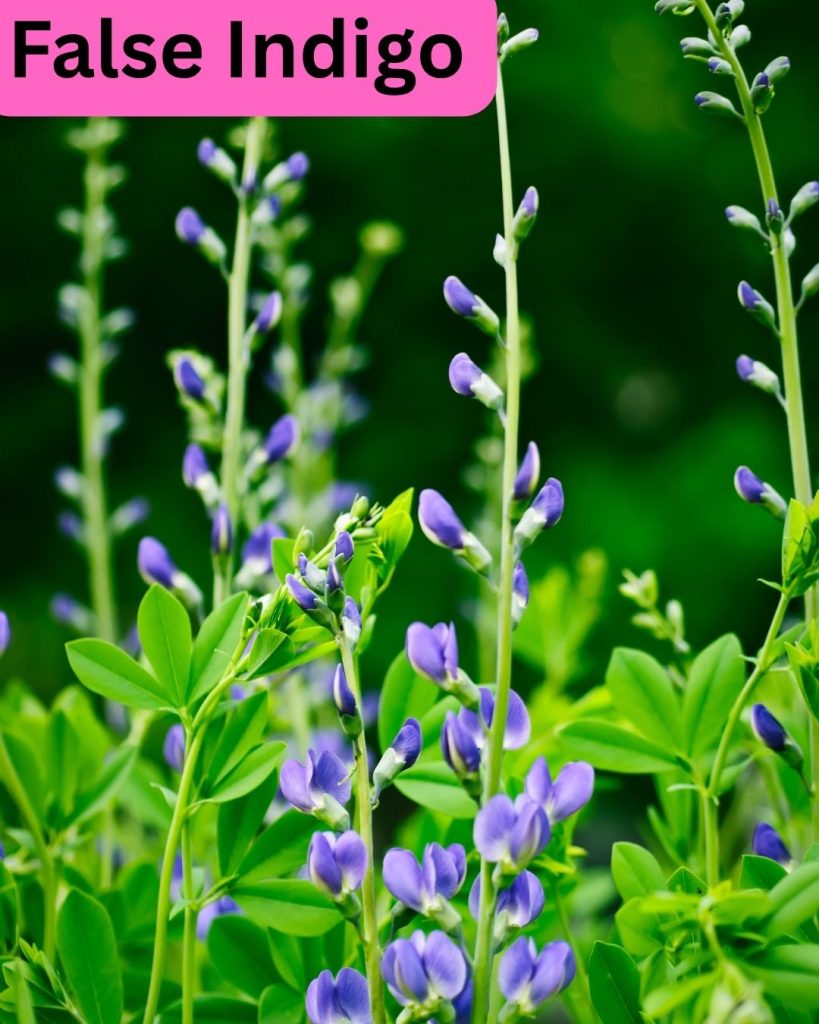
• Dry seed pods rattle like maracas, earning it the nickname “rattleweed.”
• Early settlers used its flowers to produce long‑lasting blue fabric dyes.
• Deep roots break up compacted soil and reduce erosion.
In sunny prairie‑style gardens and perennial borders, false indigo stands out with its tall spikes of pea‑like, indigo‑blue flowers rising above a mound of leathery, gray‑green foliage.
Its deep taproot and clumping habit create a sturdy barrier that shades bare soil and crowds out weeds before they can get established.
When planting false indigo, pick a site with full sun and well‑drained, fertile soil-amend heavy clay with compost or grit.
Space plants 18-24 inches apart to allow mature clumps to expand. Once settled, false indigo is drought‑tolerant and requires minimal care; avoid moving or dividing it often to protect the taproot, and mulch lightly in winter to shelter crowns and suppress overwintering weeds.
False Indigo basics
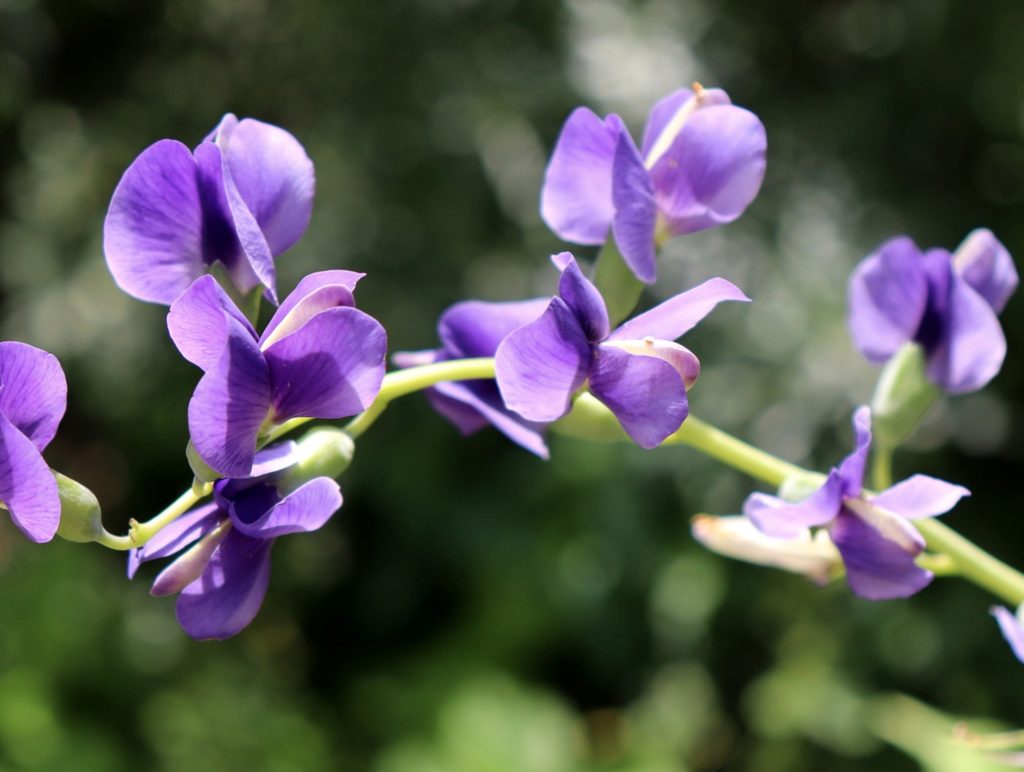
- Hardiness Zones: 3-8
- Sun/Shade Requirement: Full sun (6+ hours)
- Companions: Coneflower, coreopsis, ornamental grasses, Rudbeckia
- Bloom Time & Duration: Late spring to early summer (May-June); flower spikes last about 3-4 weeks
21. Masterwort (Astrantia major)
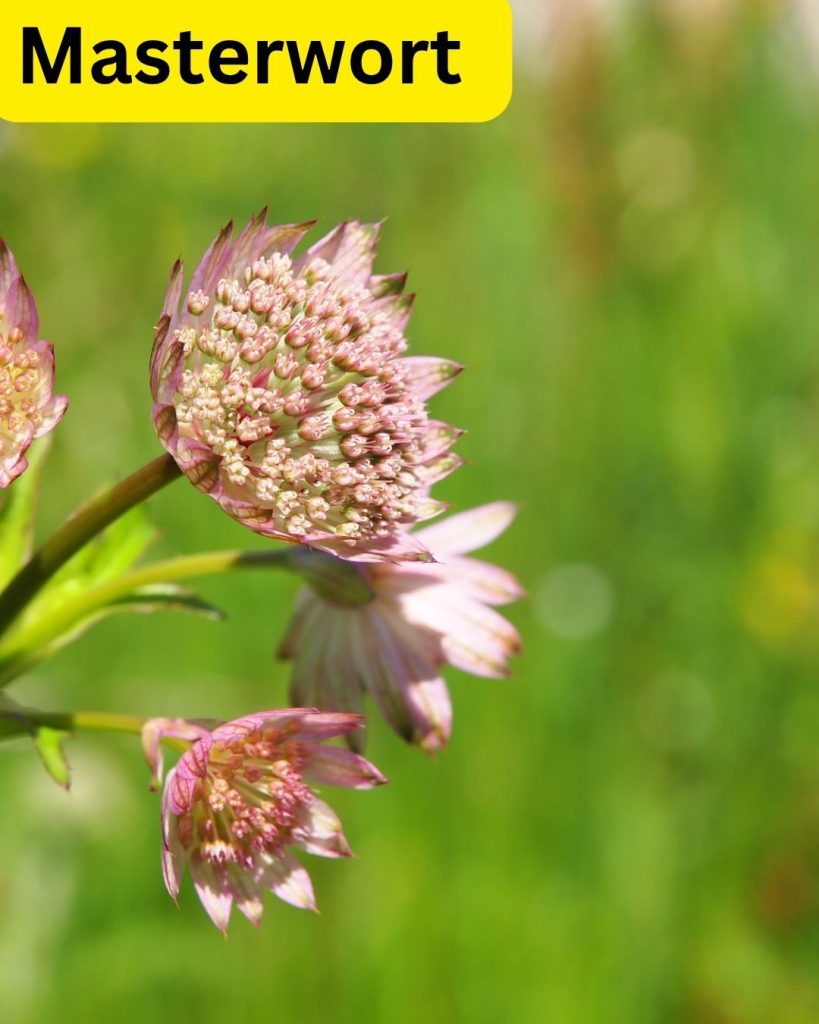
• Its star‑shaped flowers look like they belong in a fairy tale.
• Deadhead spent blooms and it may rebloom later in the season.
• Florists prize its sturdy stems and intricate blooms for elegant bouquets.
In shaded borders and woodland gardens, Masterwort unfurls lush rosettes of glossy green foliage topped by unique, star‑shaped flower clusters in shades of pink, white, and deep red.
Its low, clumping habit creates a living mulch that shades bare soil and crowds out emerging weeds before they can take hold.
When planting Masterwort, choose a spot with partial to full shade and rich, consistently moist, well‑drained soil-amend with compost to boost fertility. Space plants 12-18 inches apart so their foliage can knit together.
Keep the soil evenly moist, especially during dry spells, and divide clumps every 3-4 years in spring to maintain vigor and prevent overcrowding.
Masterwort basics
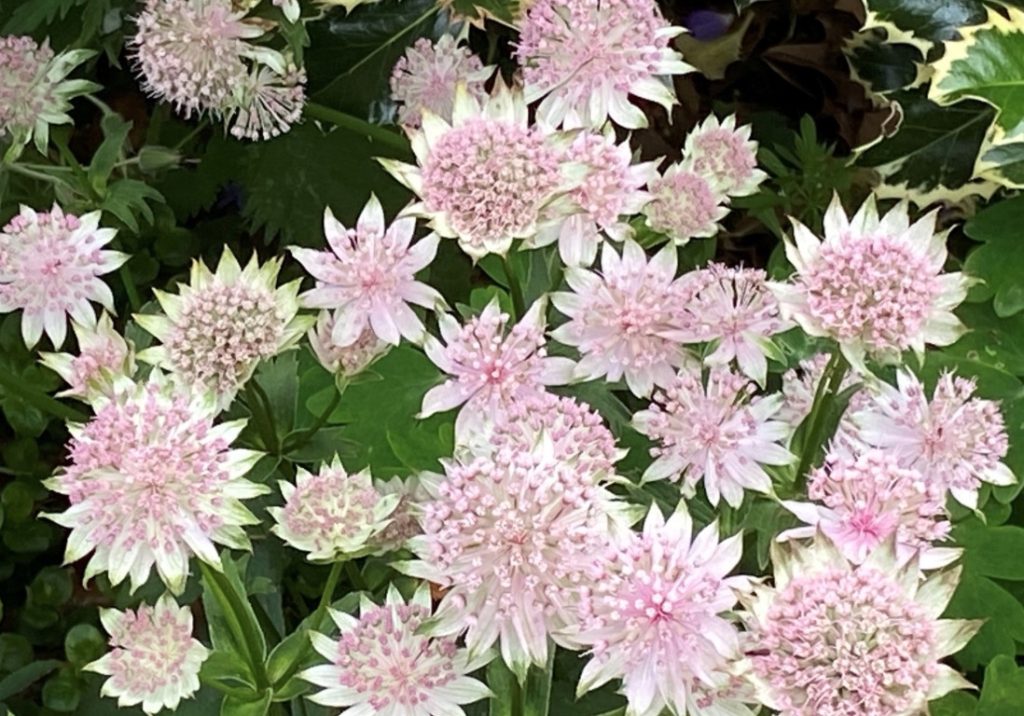
- Hardiness Zones: 4-7
- Sun/Shade Requirement: Partial to full shade (4-6 hours of indirect light)
- Companions: Ferns, hostas, astilbe, Heuchera
- Bloom Time & Duration: Late spring through early summer (June-July); individual umbels last about 4-6 weeks
22. Japanese Anemone (Anemone × hybrida)
• Colonizes rapidly to create soft colonies in partial shade.
• Blooms appear to float on slender stems above the foliage carpet.
• In famines, its roasted roots once served as an emergency food source.
Japanese Anemone (Anemone × hybrida)
In part‑shaded borders and woodland gardens, Japanese anemone carpets the ground with shiny, palmate foliage before sending up wiry stems topped by delicate, saucer‑like blooms in white, pink, or rose.
Its vigorous rhizomatous habit forms dense clumps that shade bare soil and choke out weeds, giving other plants room to shine without competition.
When planting Japanese anemones, choose partial shade to part sun in rich, moist, well‑drained soil-amend heavy beds with compost to improve texture.
Space clumps 18-24 inches apart so their spreading roots create a living mulch. Stake taller varieties to prevent flopping, mulch lightly each spring to conserve moisture, and deadhead spent flowers to extend the blooming season well into fall.
Japanese Anemone basics
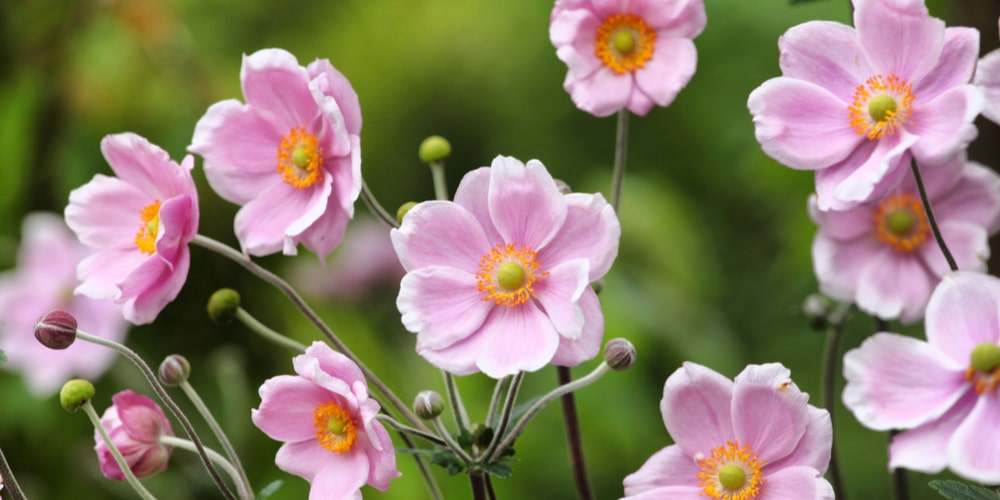
- Hardiness Zones: 4-8
- Sun/Shade Requirement: Partial shade to part sun (morning light, afternoon protection)
- Companions: Hostas, ferns, astilbe, pulmonaria, hellebores
- Bloom Time & Duration: Late summer through fall (August-October); continuous waves of blooms for 6-8 weeks when spent flowers are removed
23. Jerusalem Sage (Phlomis russeliana)
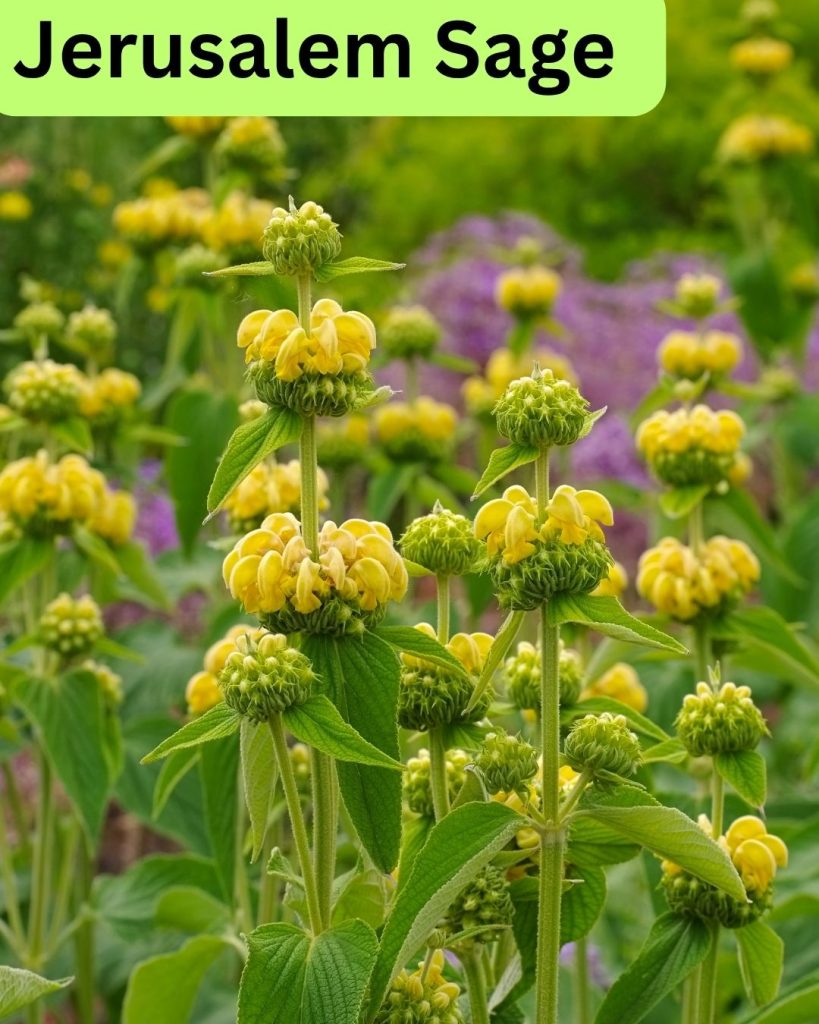
• Woolly leaves reflect brutal sun, helping it thrive in dry heat.
• Bees forage its bracts even when most other blooms have faded.
• Middle Eastern cooks traditionally used its leaves to flavor stews.
On sunny slopes and in Mediterranean‑style borders, Jerusalem sage cloaks the ground in velvety, gray‑green foliage before rising into tiered whorls of bright yellow, hooded flowers.
Its vigorous, spreading habit quickly blankets bare soil, shading out weed seedlings and creating a durable living mulch that keeps the ground clear.
When planting Jerusalem sage, choose a site with full sun and well‑drained soil-sandy loam or gritty mixes work best. Space plants 18-24 inches apart so their runners can interlock.
Once established, it’s drought‑tolerant and requires minimal care; simply trim back spent flower stems after bloom to maintain a neat shape and encourage fresh basal growth.
Jerusalem Sage basics
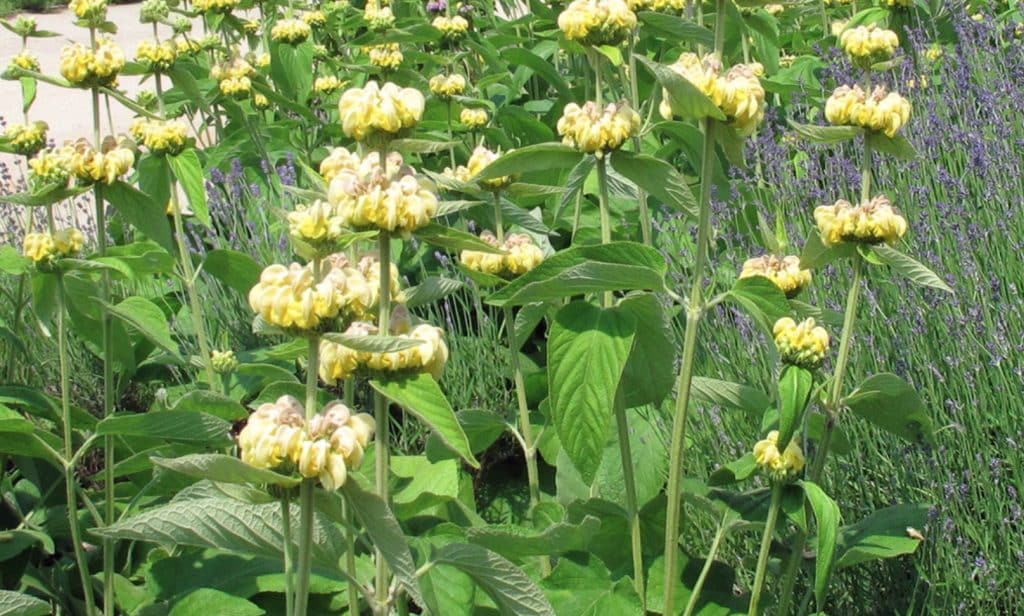
- Hardiness Zones: 5-9
- Sun/Shade Requirement: Full sun (6+ hours)
- Companions: Russian sage, lavender, ornamental grasses, Salvia nemorosa
- Bloom Time & Duration: Late spring to early summer (May-June); flower whorls last about 4-6 weeks
24. Speedwell (Veronica spicata)
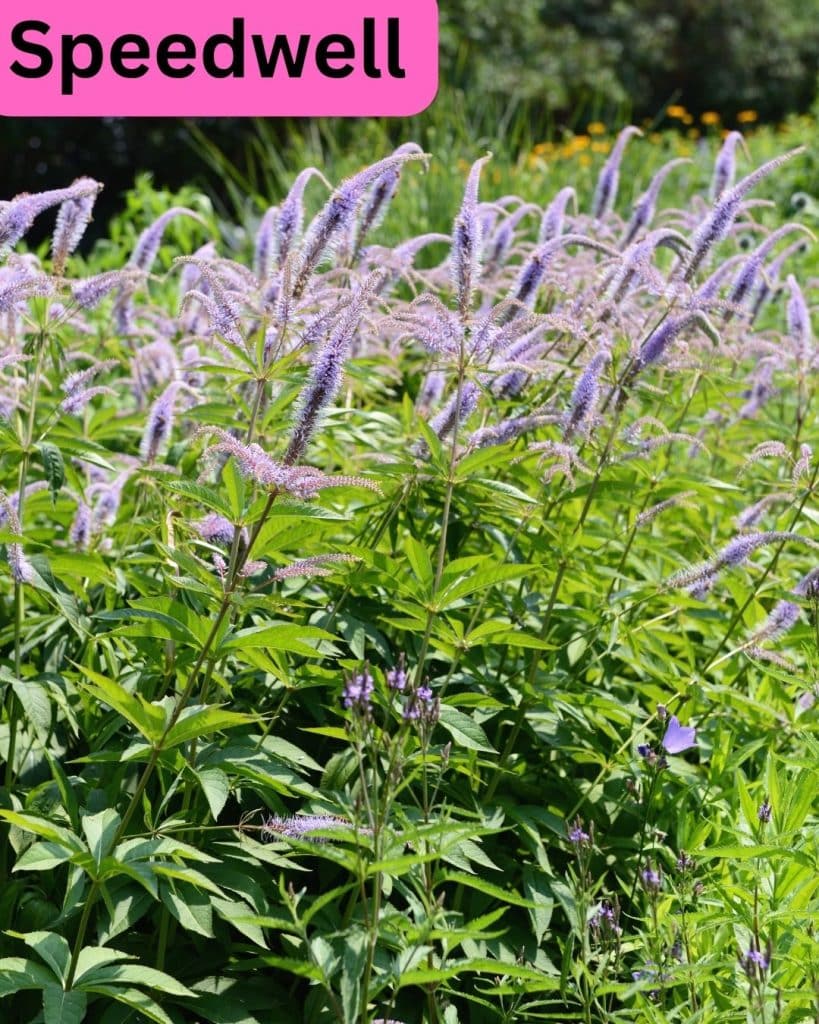
• In folklore, its juice was believed to cure sick livestock overnight.
• A tidy clump can bloom for months with simple deadheading.
• Traditional healers brewed it as a tea for tummy and lung troubles.
In border fronts and rock gardens, speedwell brightens the scene with upright spikes of cobalt‑blue flowers soaring above a mound of narrow, glossy leaves.
Its clump‑forming habit creates a dense carpet that shades bare soil and crowds out emerging weed seedlings.
When planting speedwell, choose full sun and well‑drained soil enriched with compost to encourage strong root growth.
Space plants 12-18 inches apart to allow each mound to fill in. After the first flush of blooms in early summer, deadhead spent spikes to promote a second flowering and divide clumps every 2-3 years in spring to maintain vigor and keep the patch looking fresh.
Speedwell basics
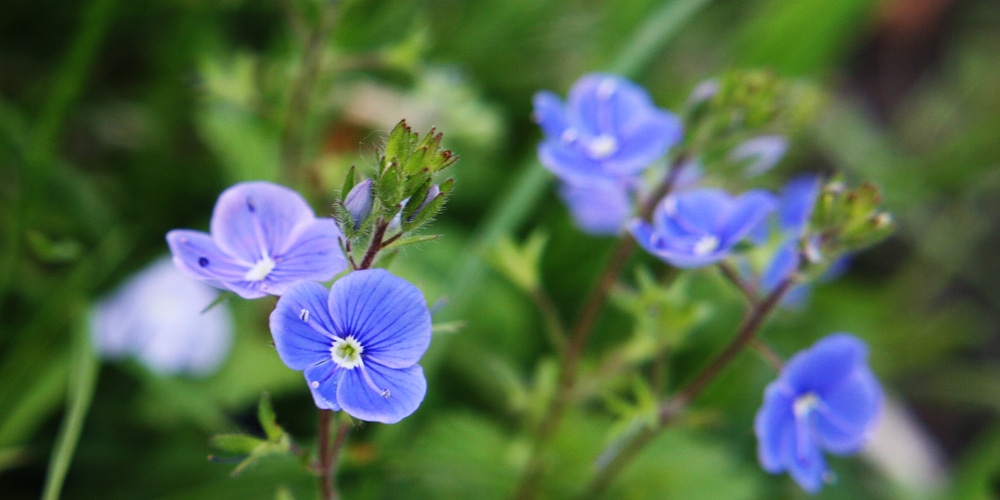
- Hardiness Zones: 3-8
- Sun/Shade Requirement: Full sun (6+ hours); tolerates light afternoon shade
- Companions: Echinacea, yarrow, ornamental grasses, sedum, coreopsis
- Bloom Time & Duration: Early to mid summer (June-July); individual spikes last about 2-3 weeks, with rebloom when deadheaded
25. Daylily (Hemerocallis spp.)
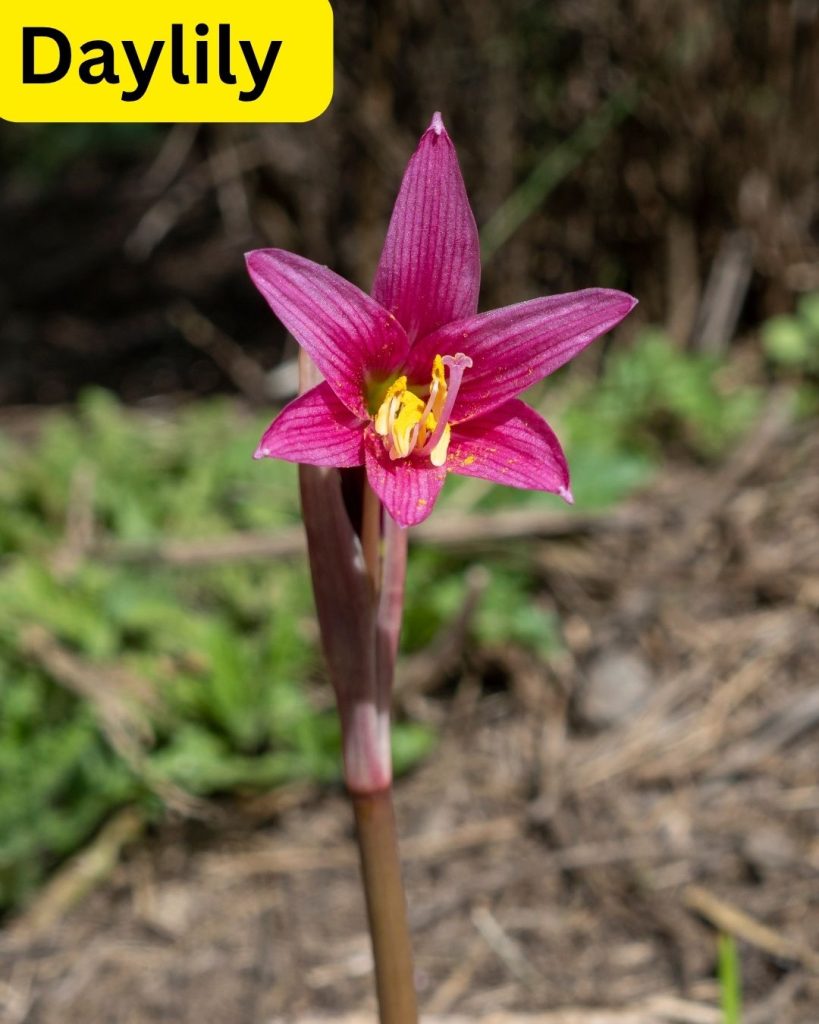
• Each flower lasts just one brilliant day, but dozens open in succession.
• In parts of Asia, unopened daylily buds are a popular stir‑fry veggie.
• It even thrives in poor, compacted soils where other perennials sulk.
Daylilies boast arching, grass-like foliage and trumpet-shaped blooms that rebloom each day, rapidly filling space to suppress weeds. They’re nearly foolproof for busy gardeners.
Daylily Basics
- Hardiness Zones: 3-9
- Sun/Shade Requirement: Full sun to part shade
- Companions: Echinacea, Coreopsis, Salvia
- Bloom Time & Duration: Summer (June-August); each bloom lasts one day but plants rebloom over 6-8 weeks
26. Goldenrod (Solidago rugosa)
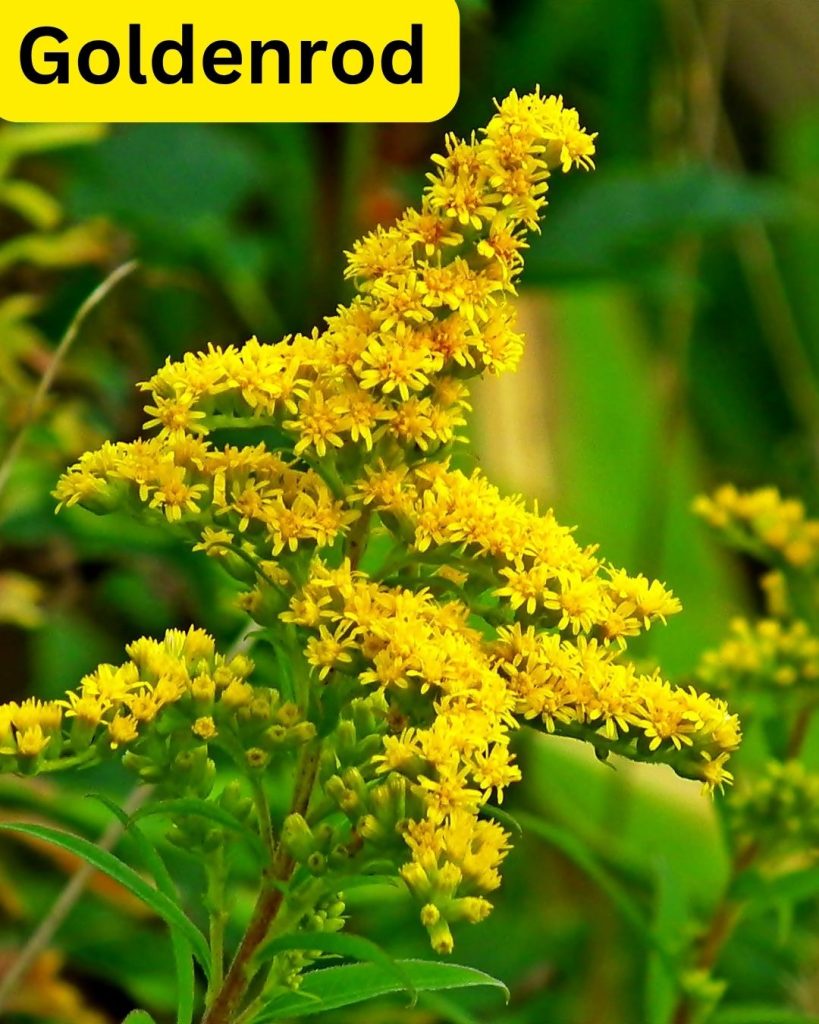
• Its pollen grains are too large to become the airborne allergens often blamed.
• Solitary bees line their nests with its leaves to regulate moisture.
• WWI‑era researchers once tested its roots as an early rubber substitute.
Late‑season goldenrod produces plumes of bright yellow flowers that form colonies through rhizomes, creating a golden carpet that suppresses weeds. Insects swarm to its nectar-rich blooms.
- Hardiness Zones: 3-8
- Sun/Shade Requirement: Full sun
- Companions: Asters, Joe Pye Weed, Sedum
- Bloom Time & Duration: Late summer to fall (August-October); 6-8 weeks
Choose any (or all) of these vigorous perennials to shade out, crowd out, and outlast pesky weeds-so you can spend less time weeding and more time enjoying your garden.